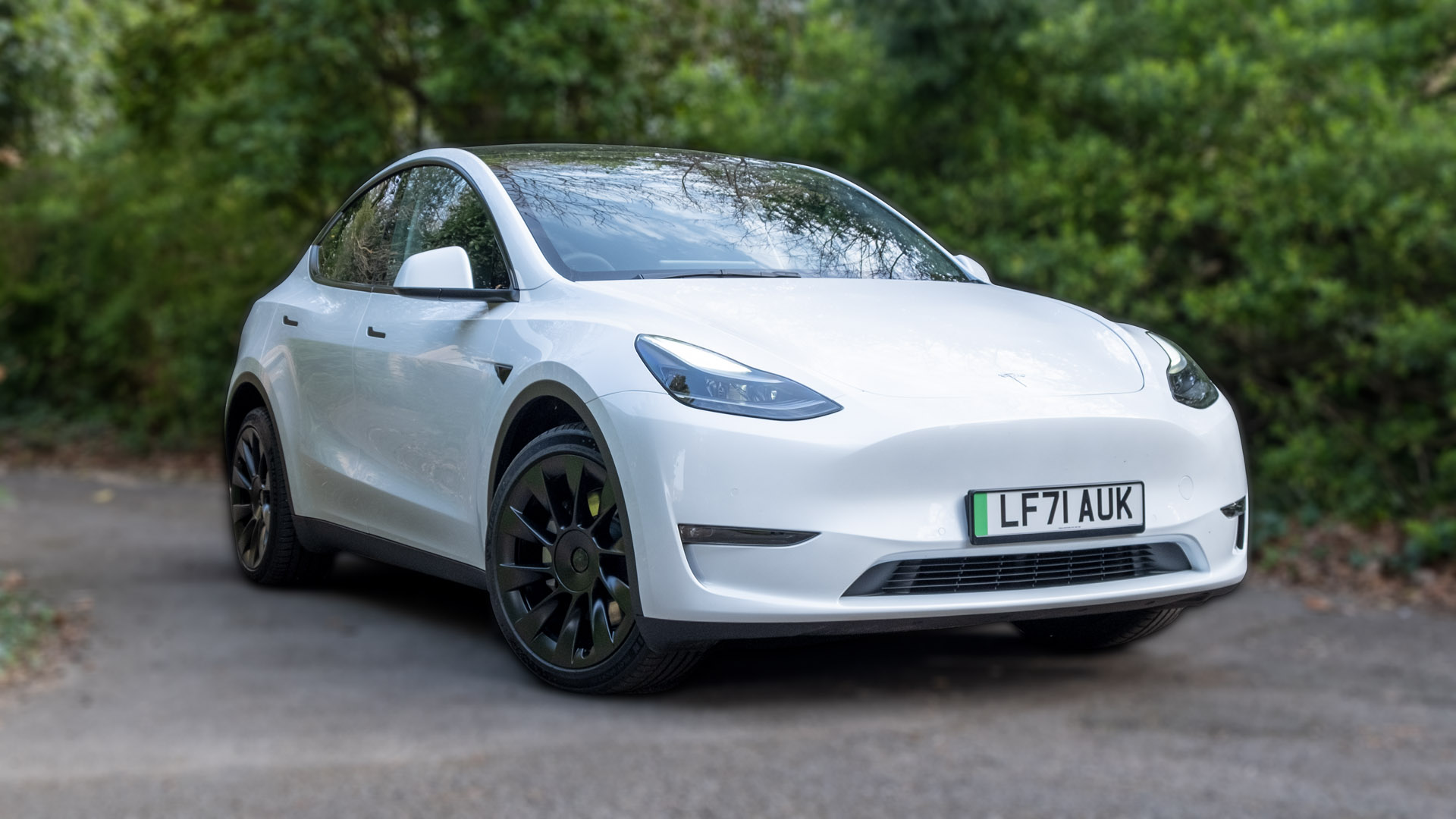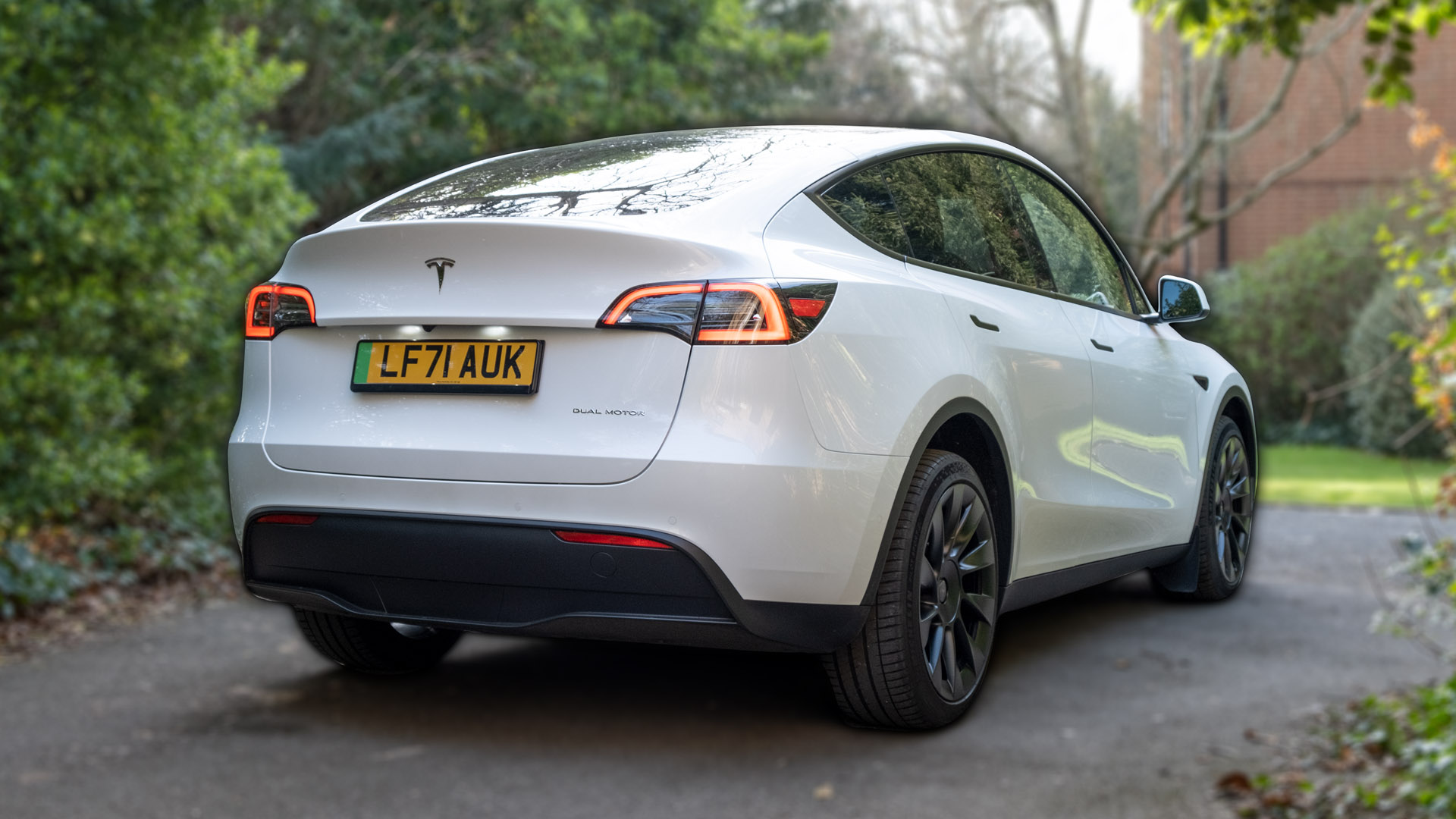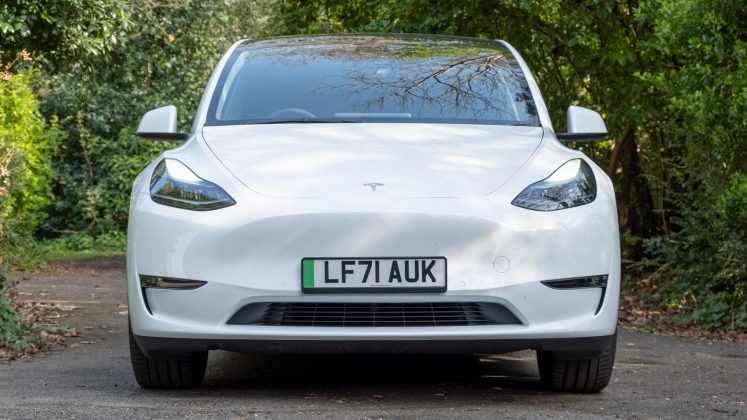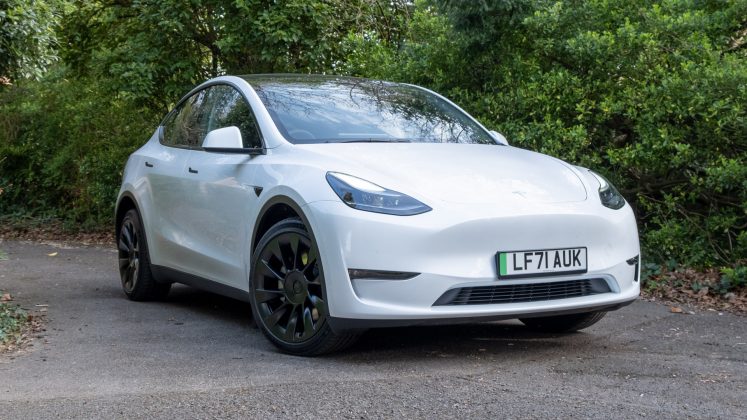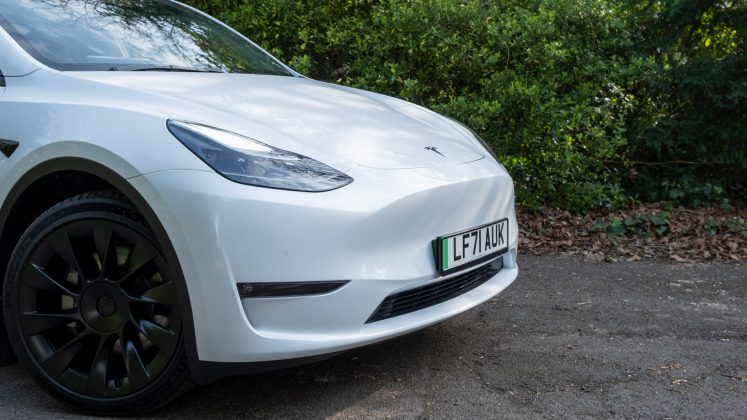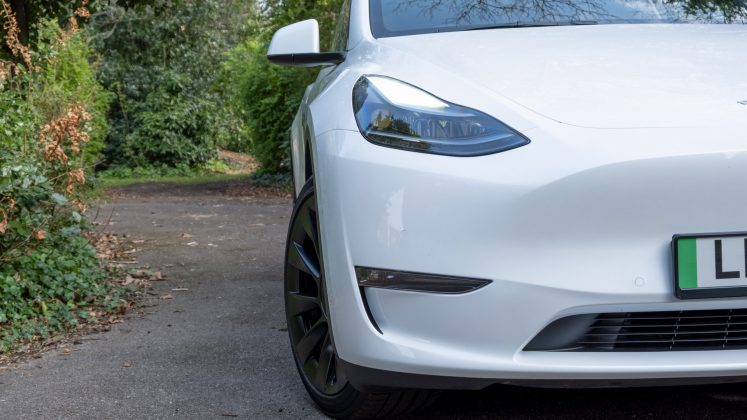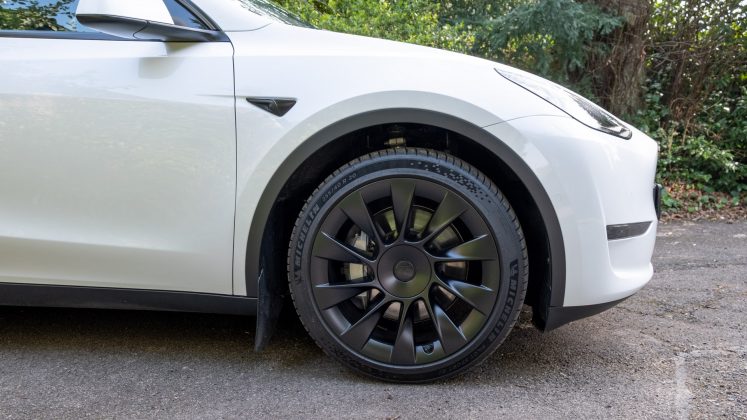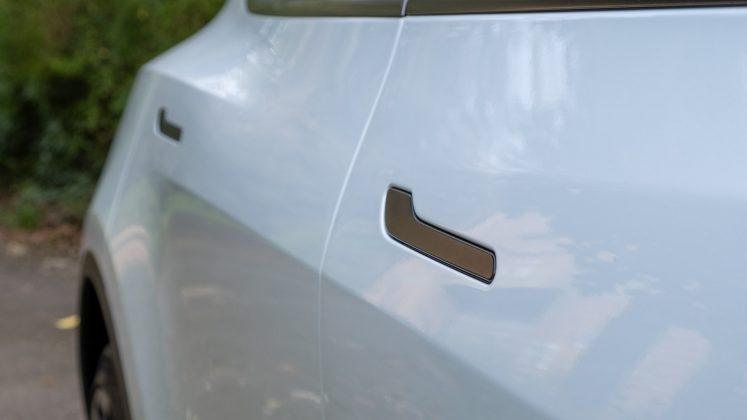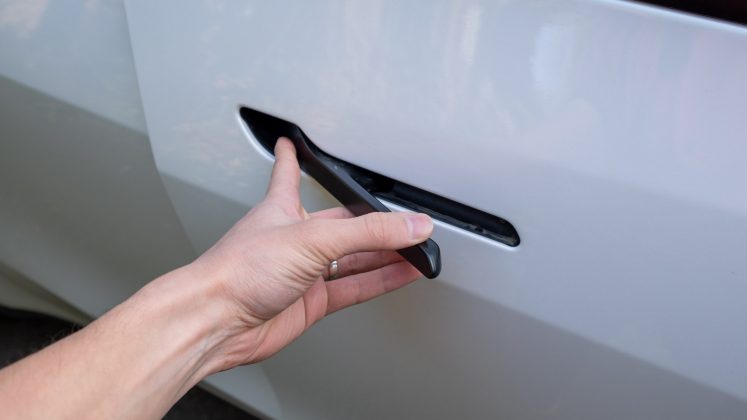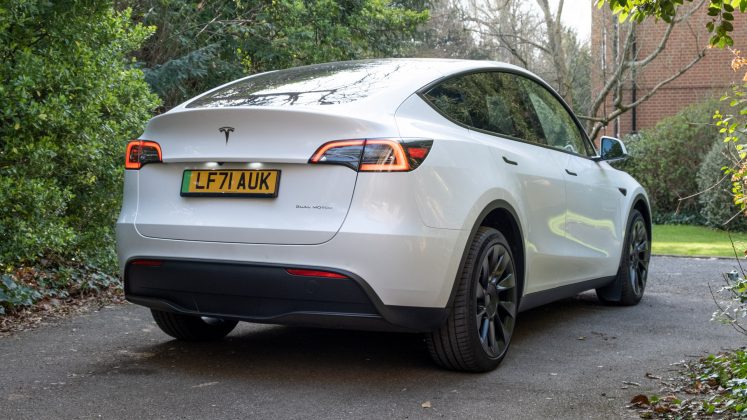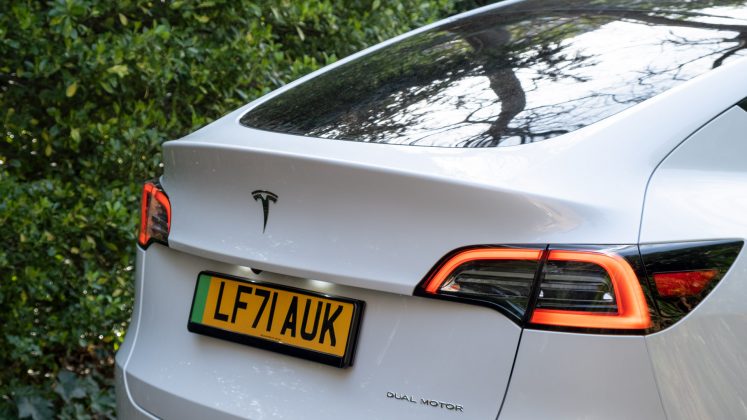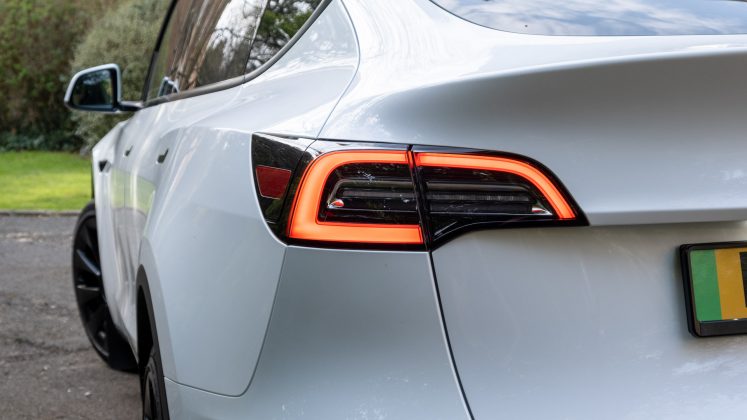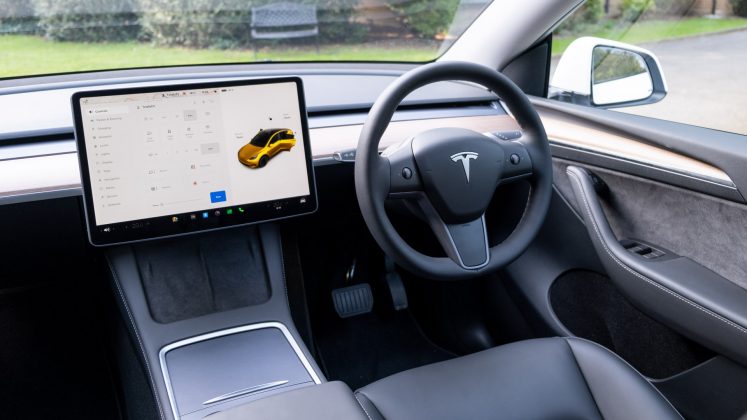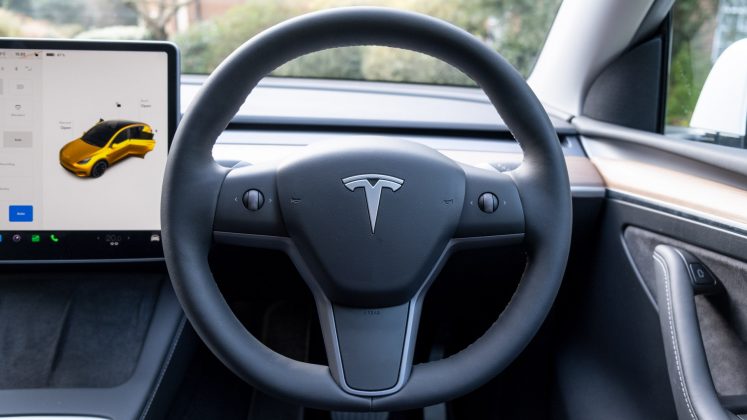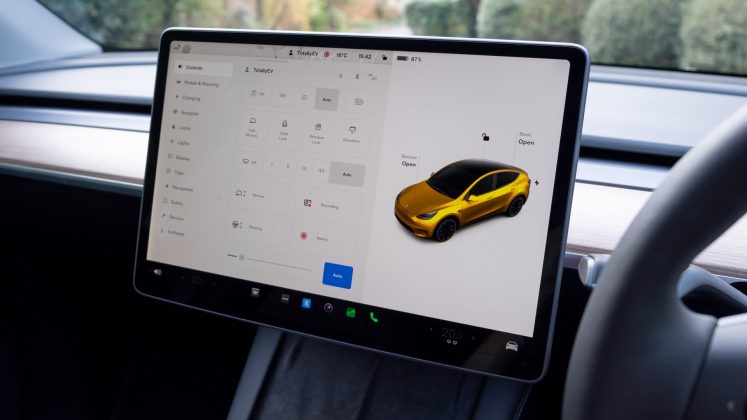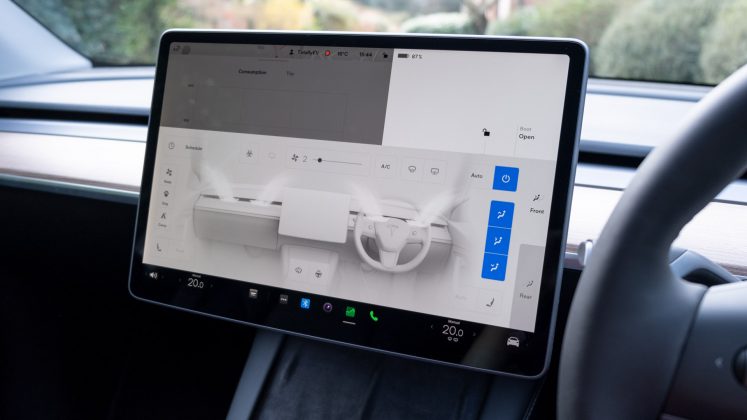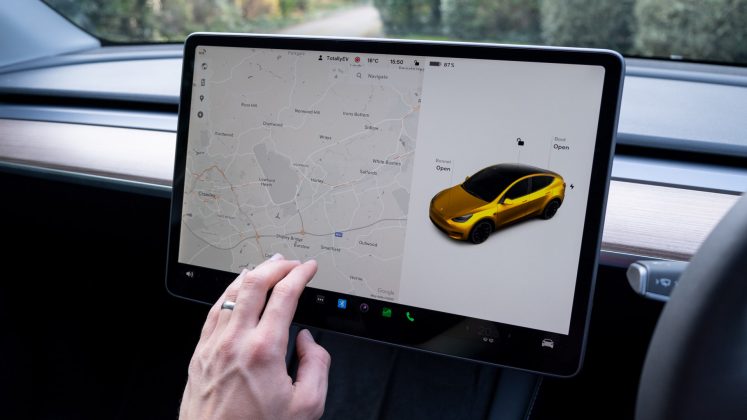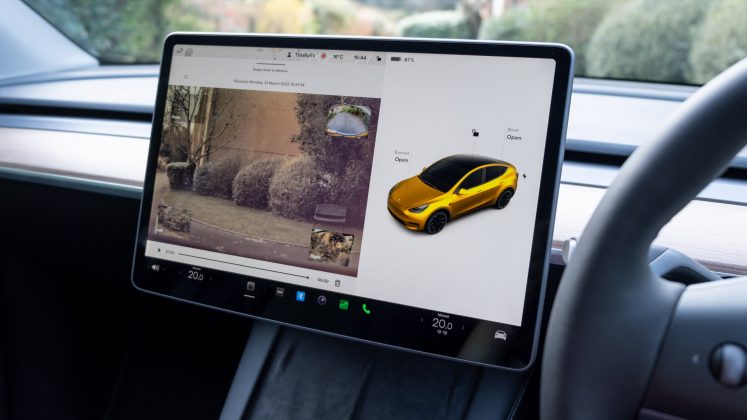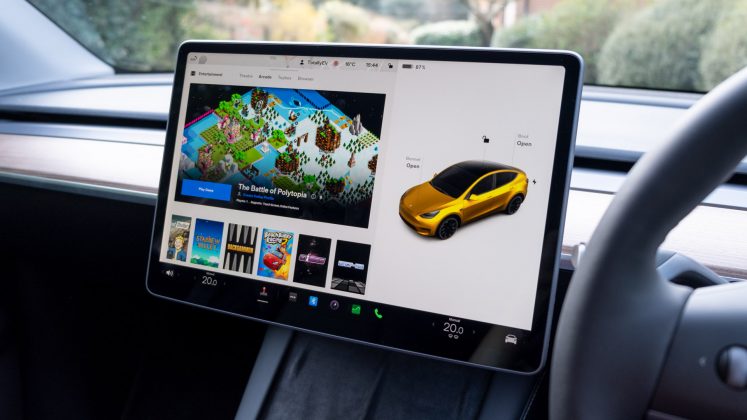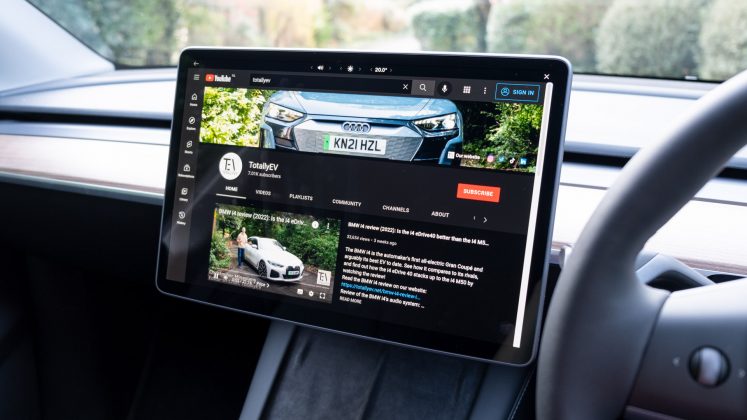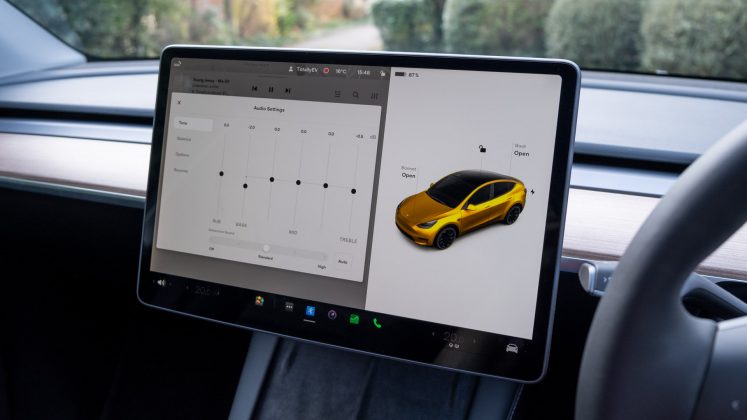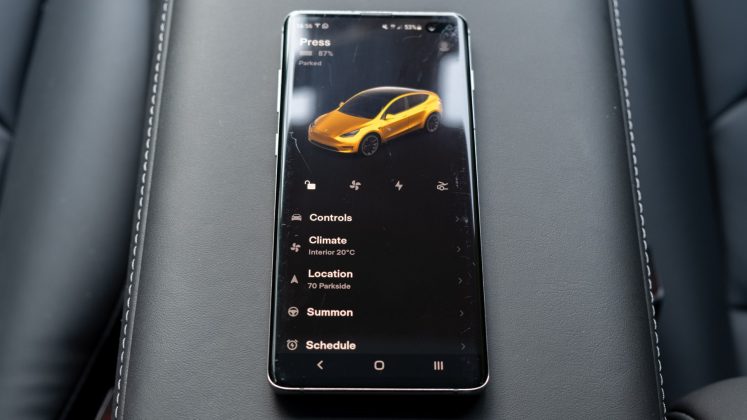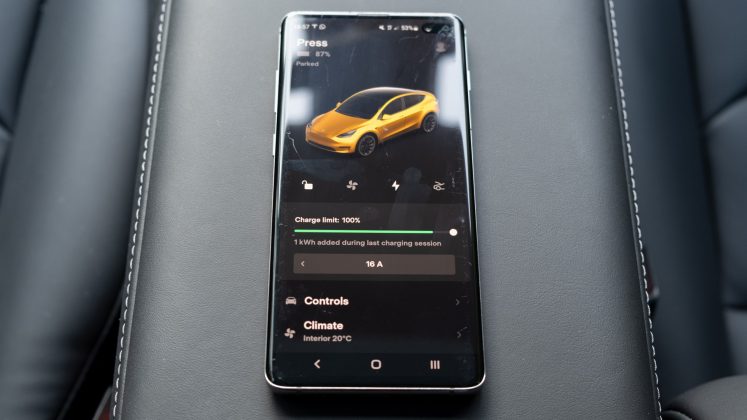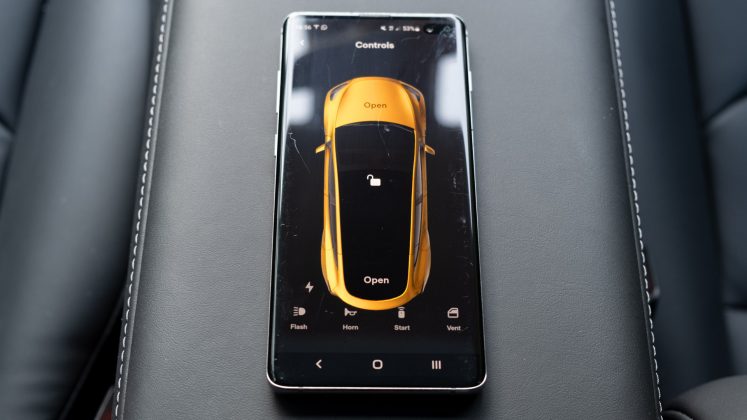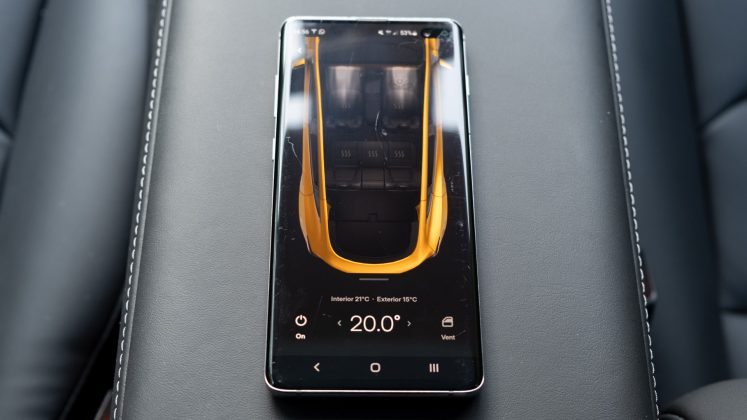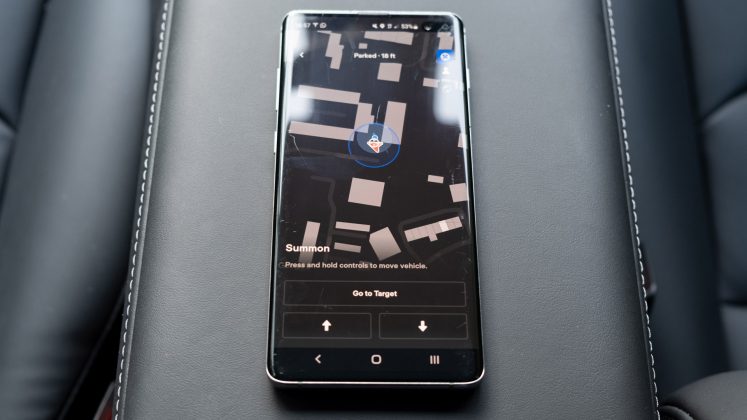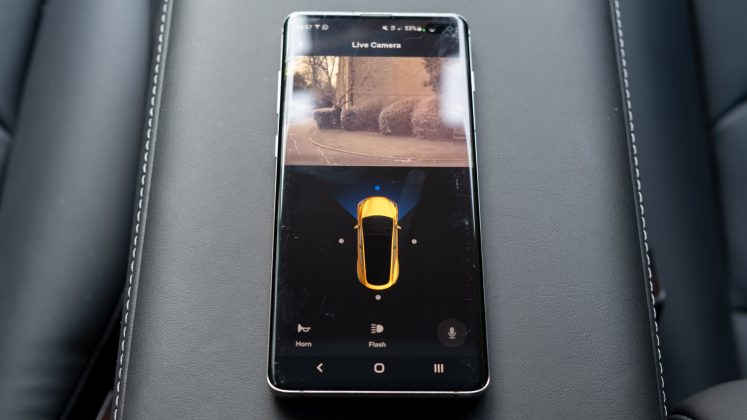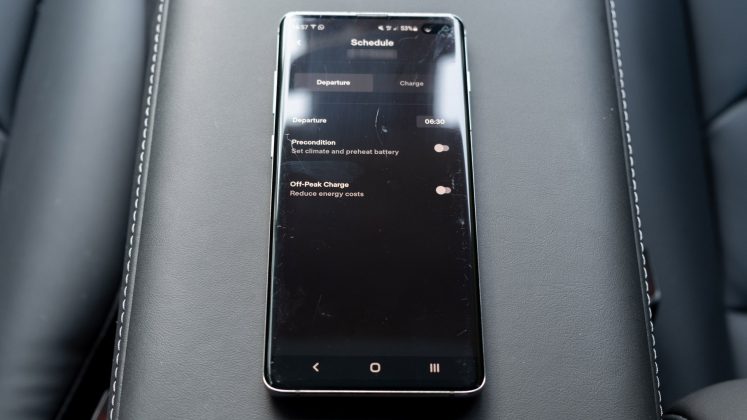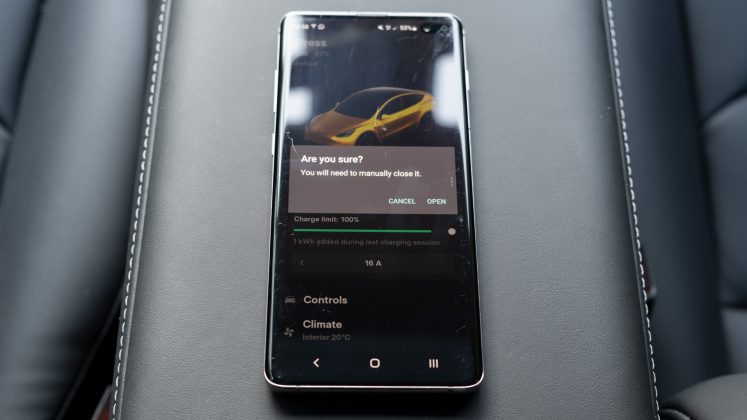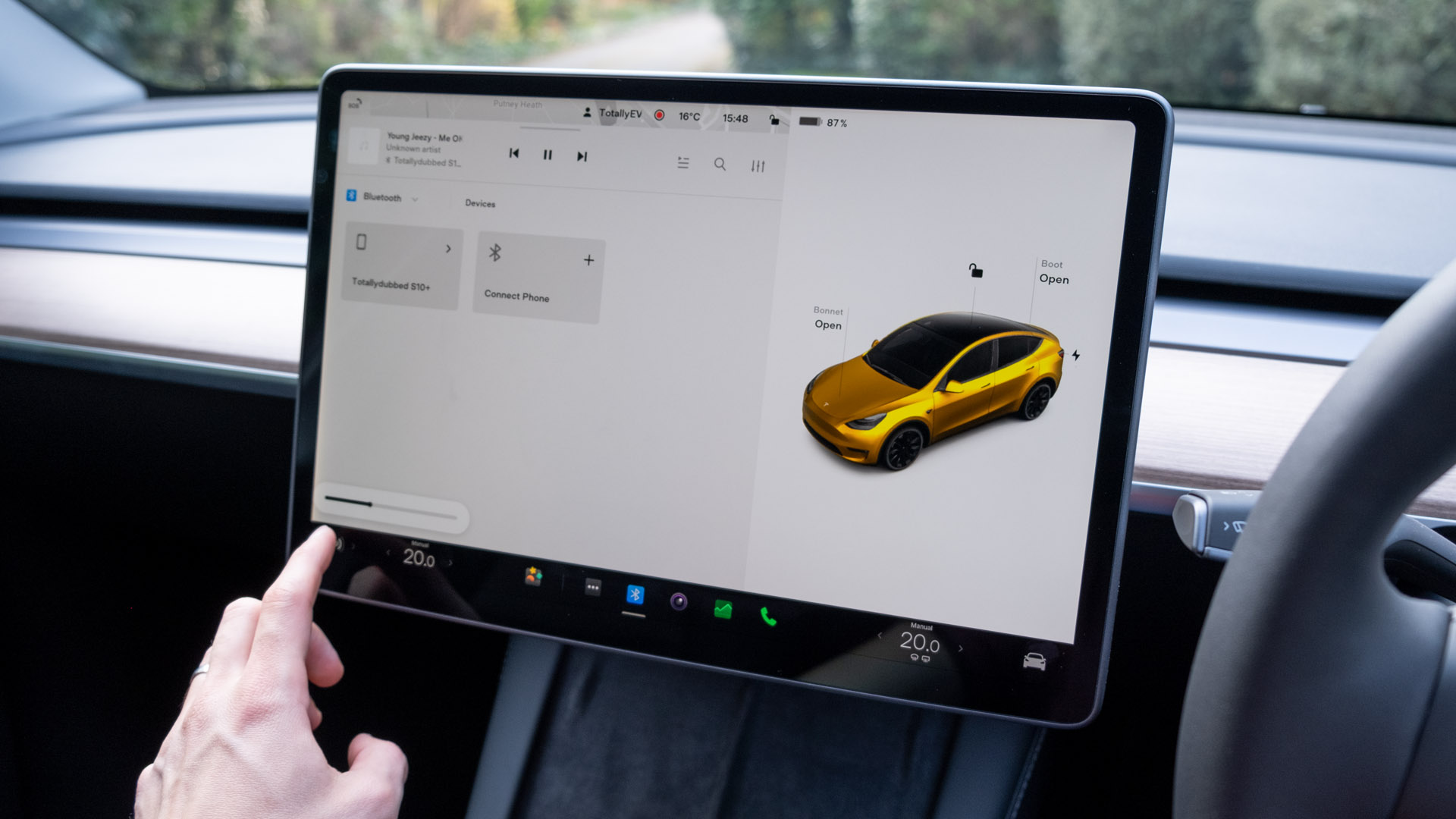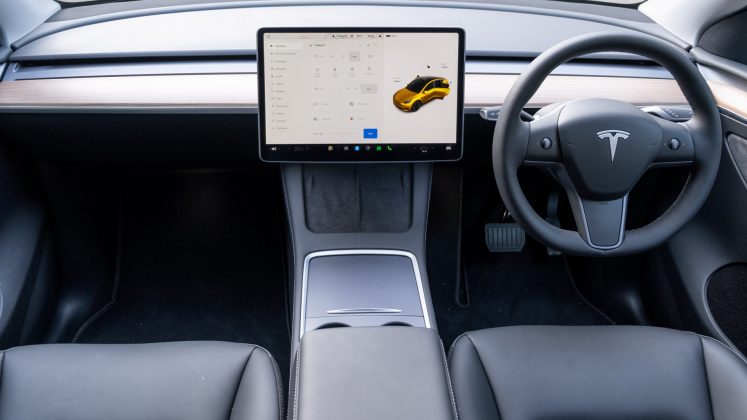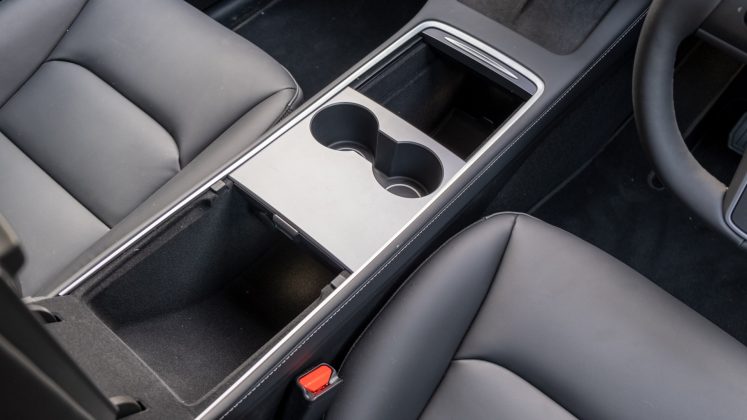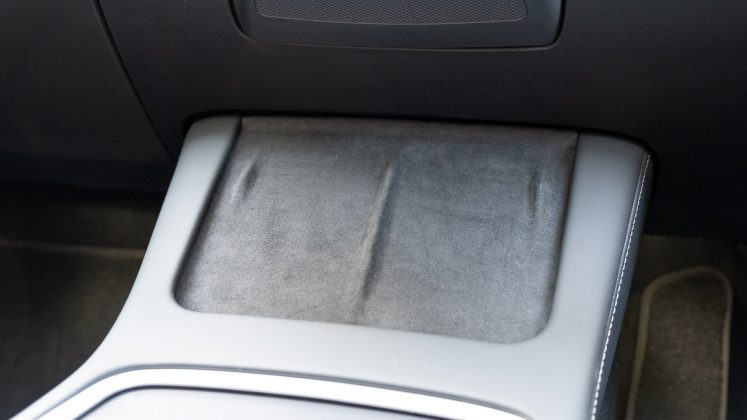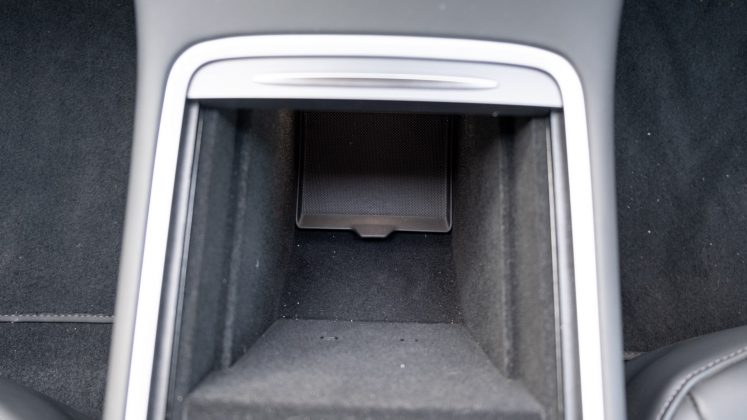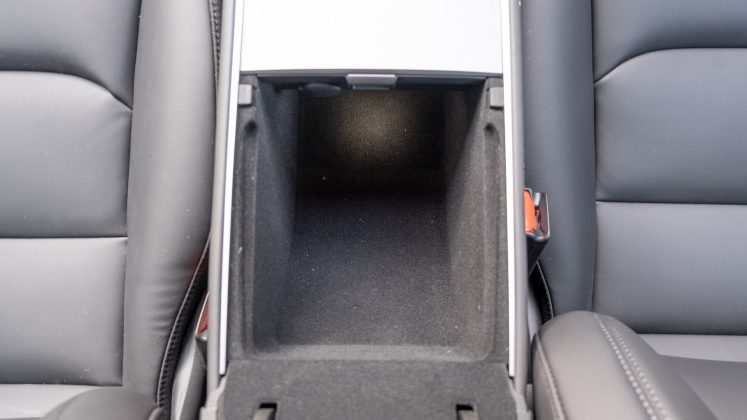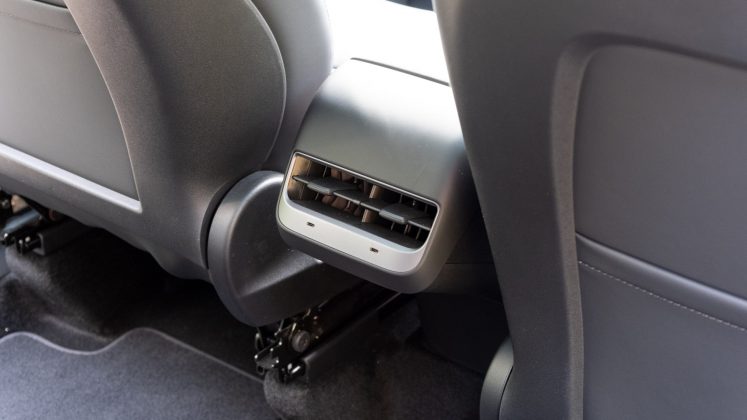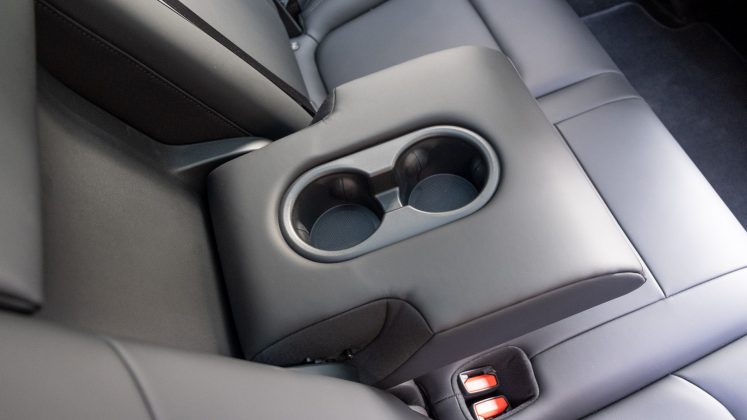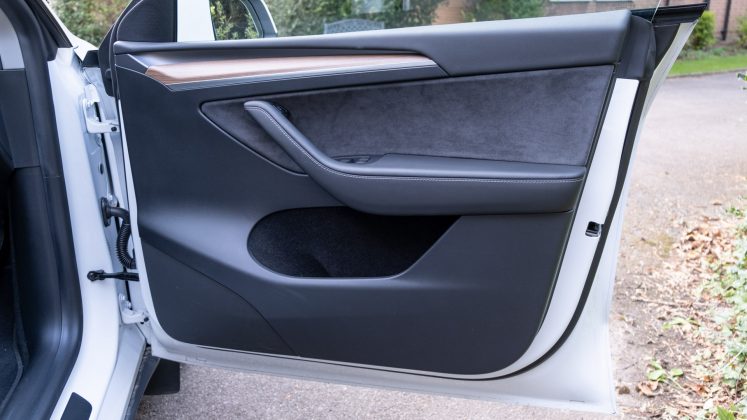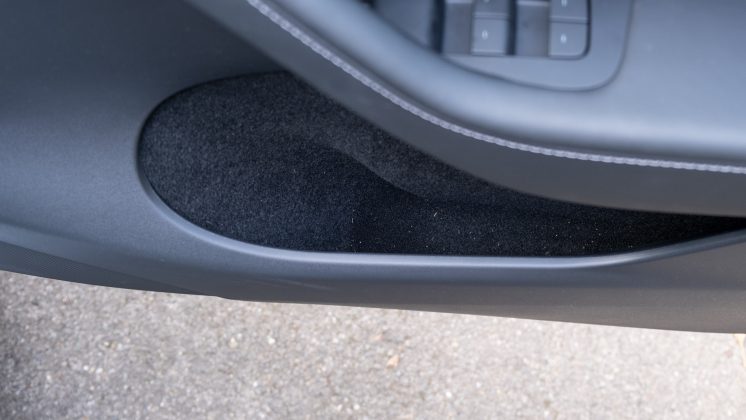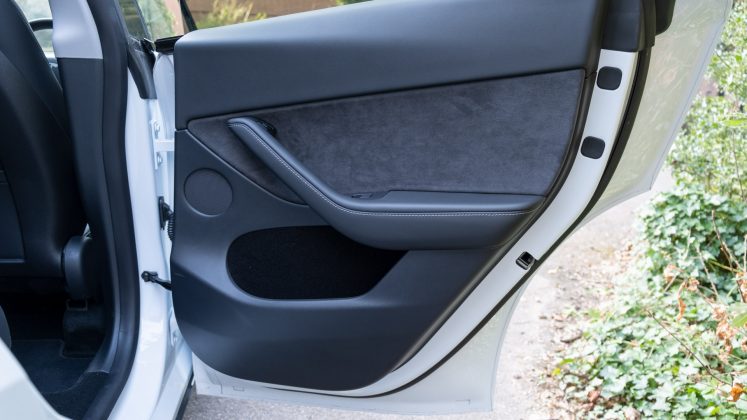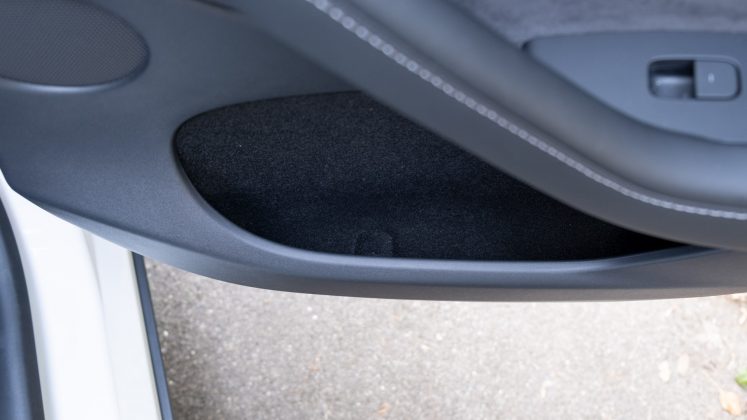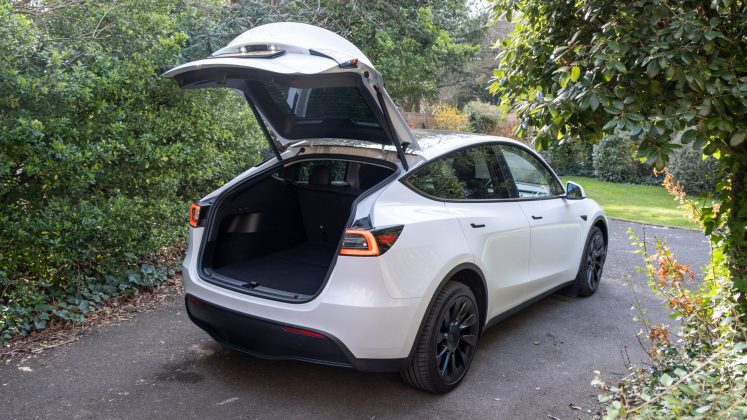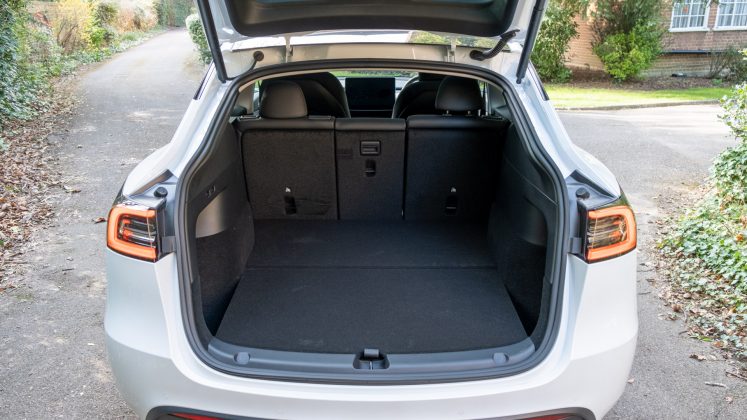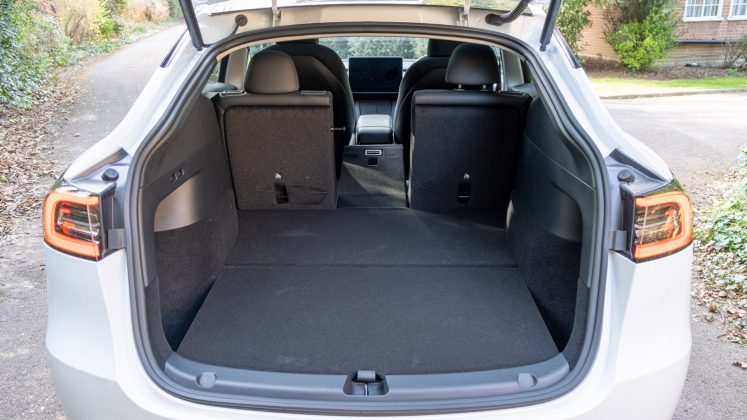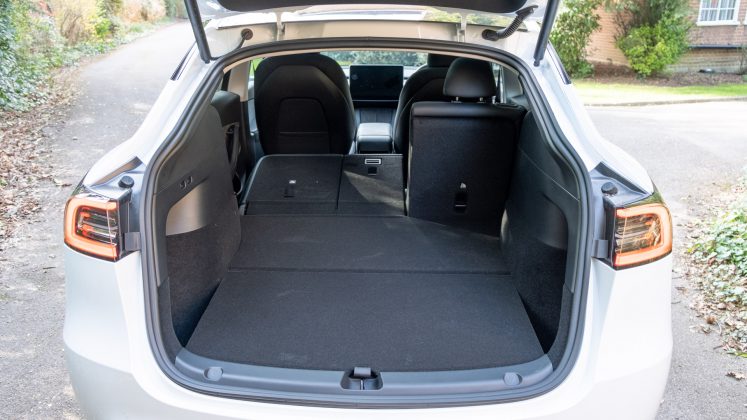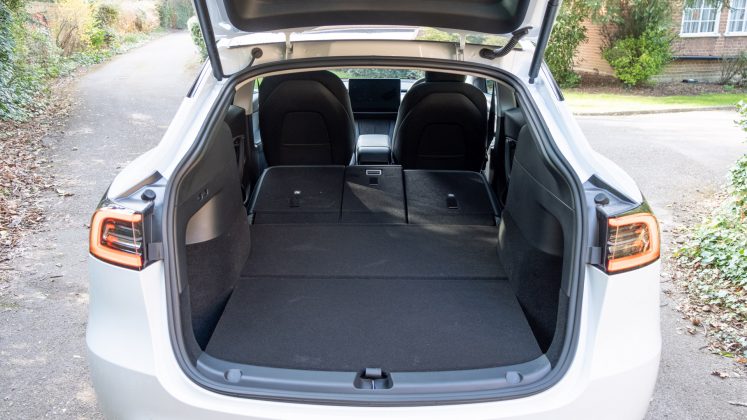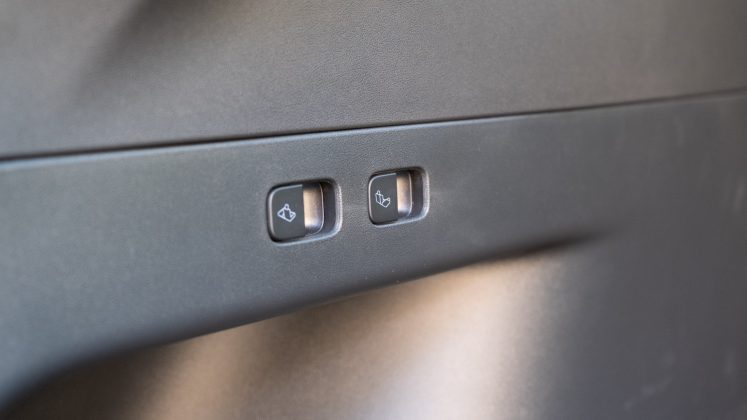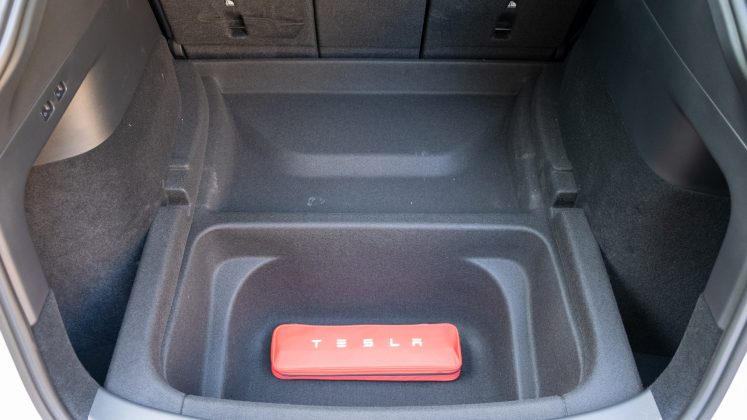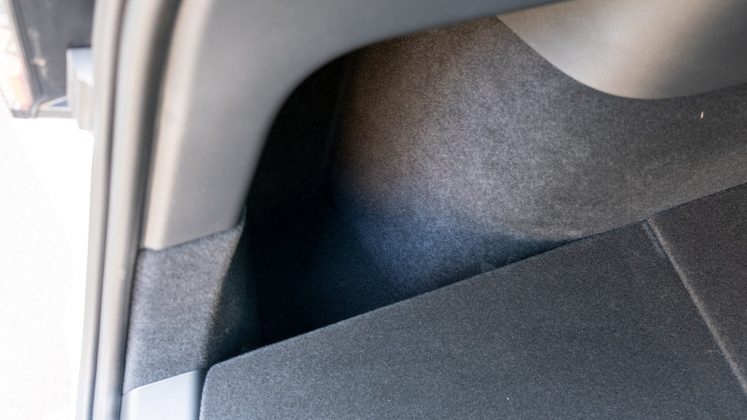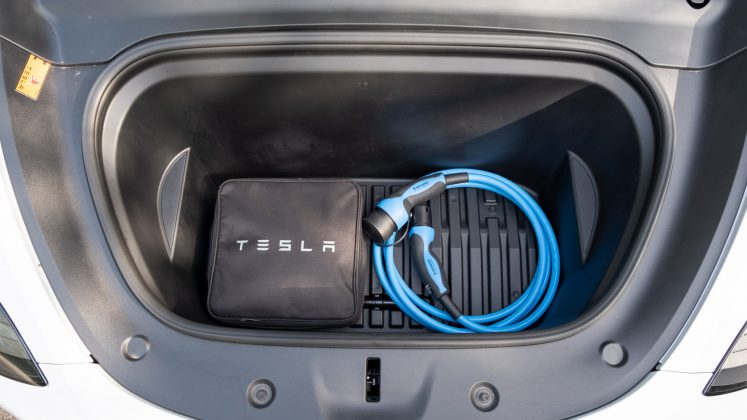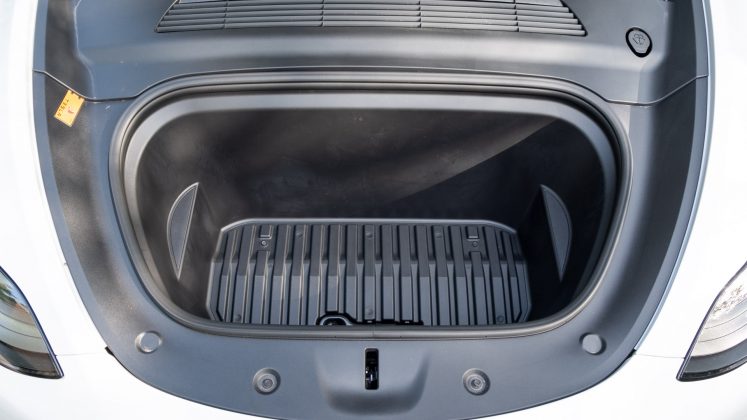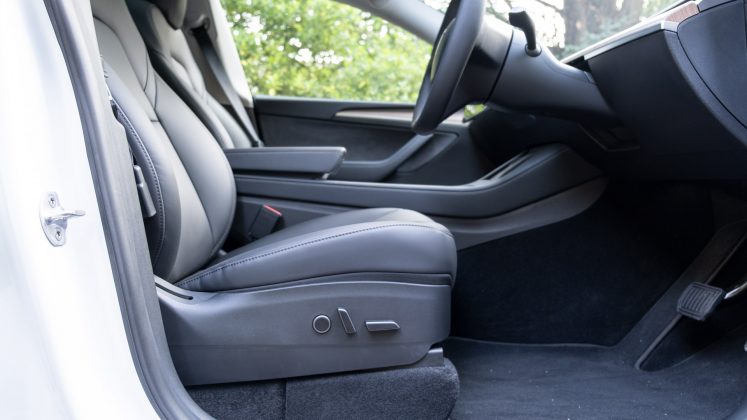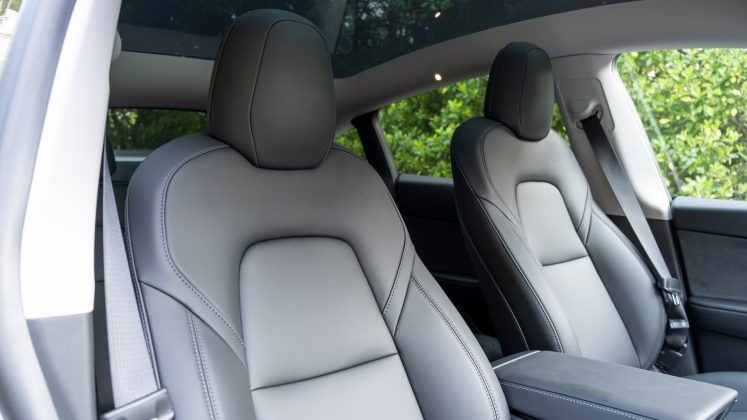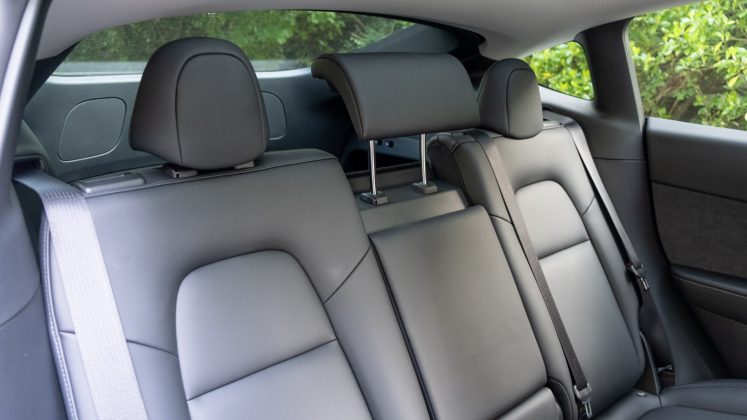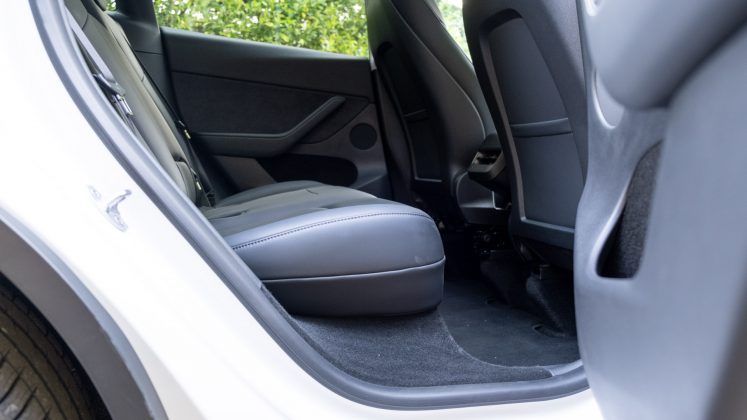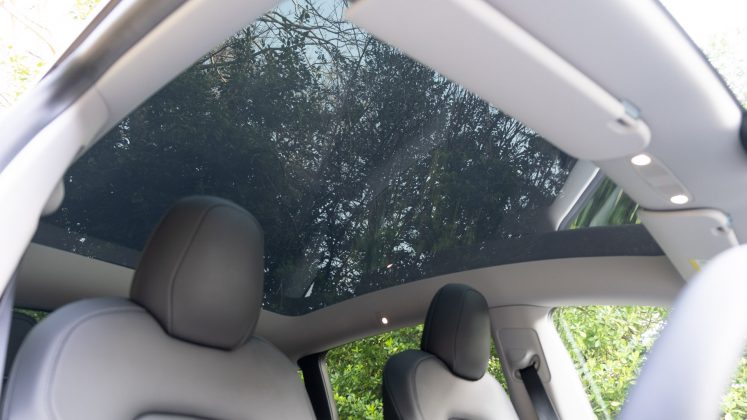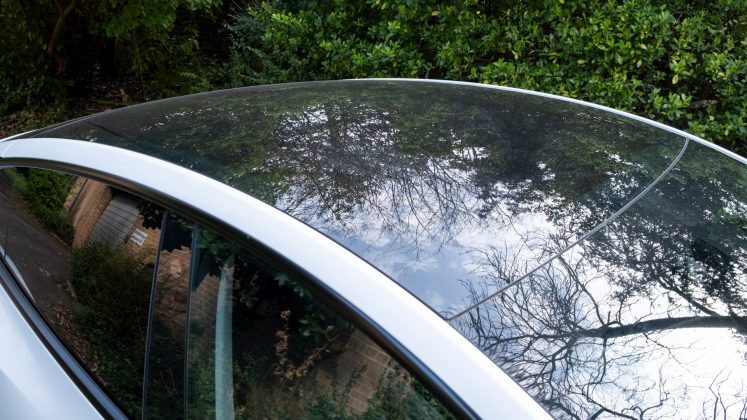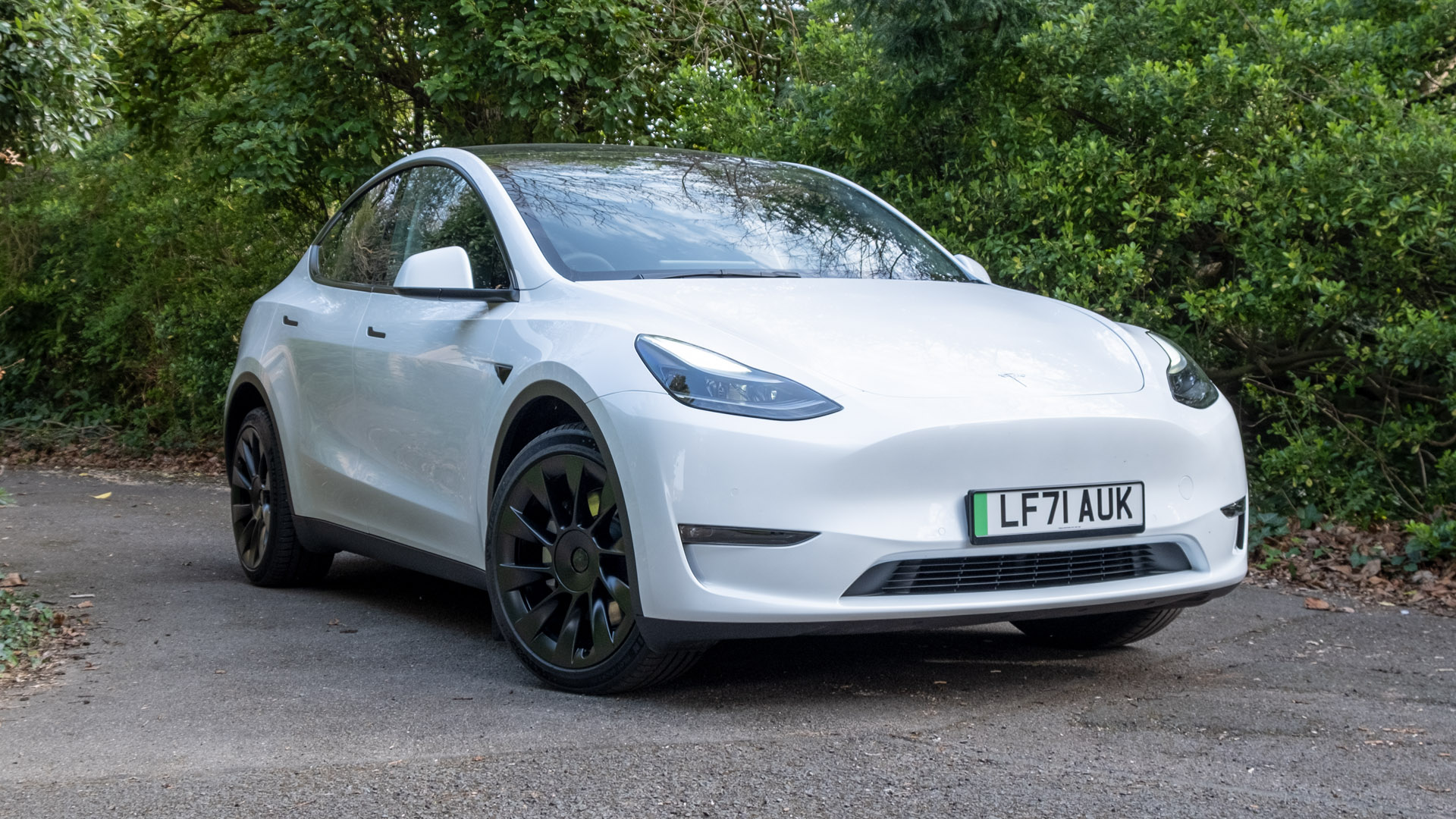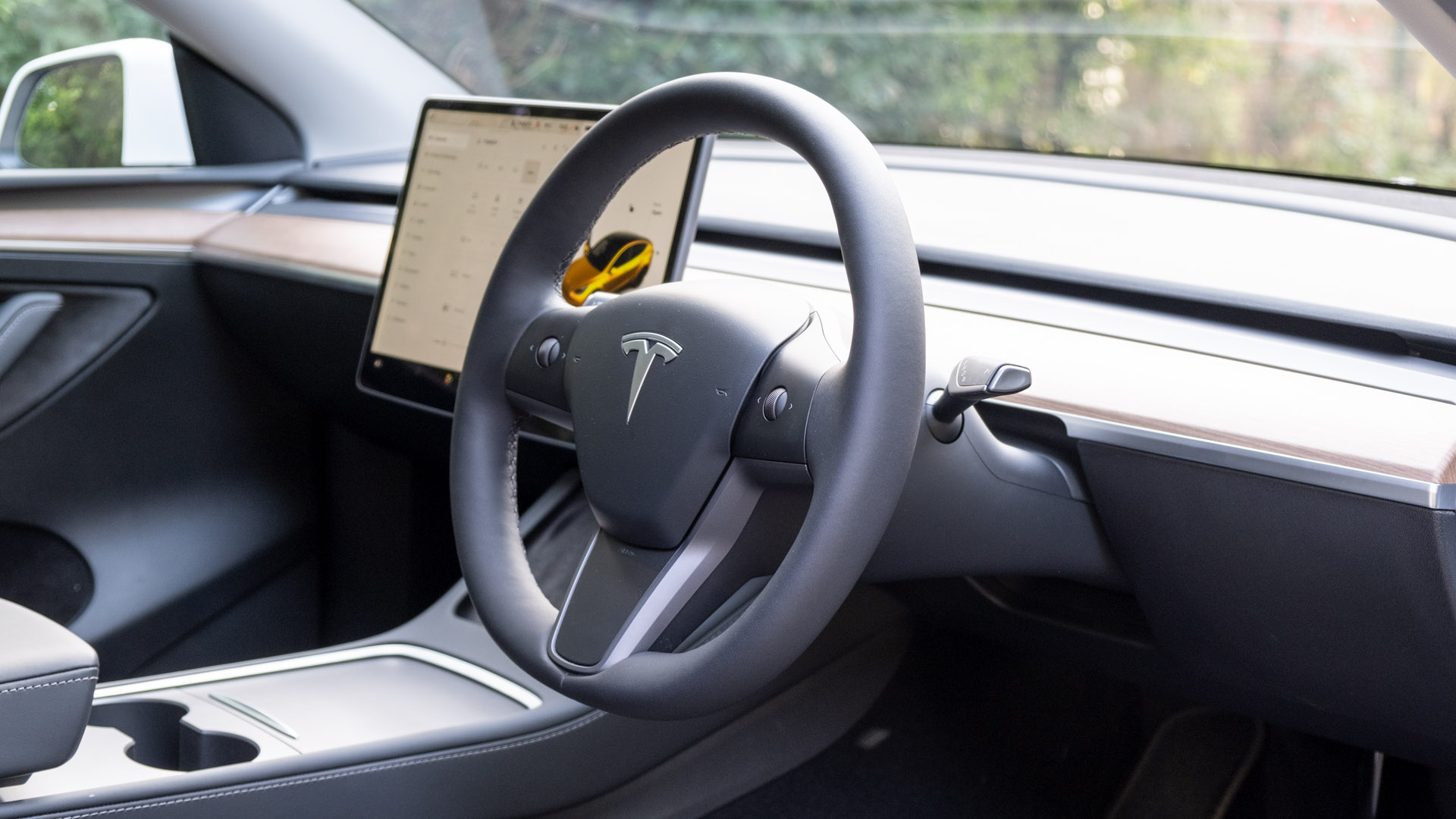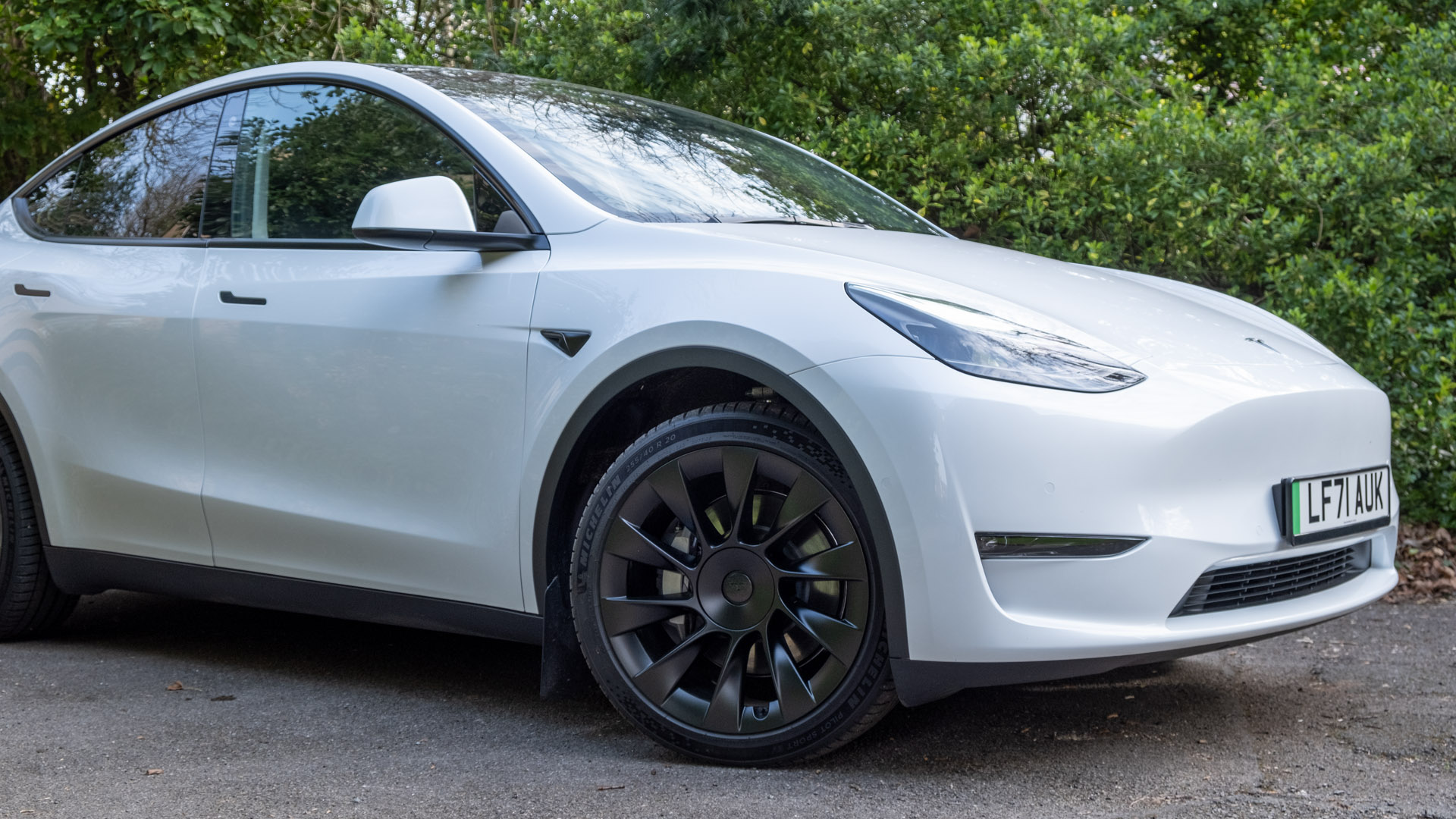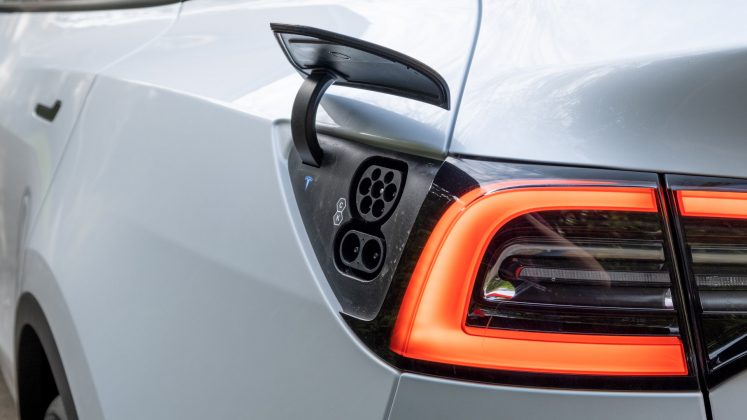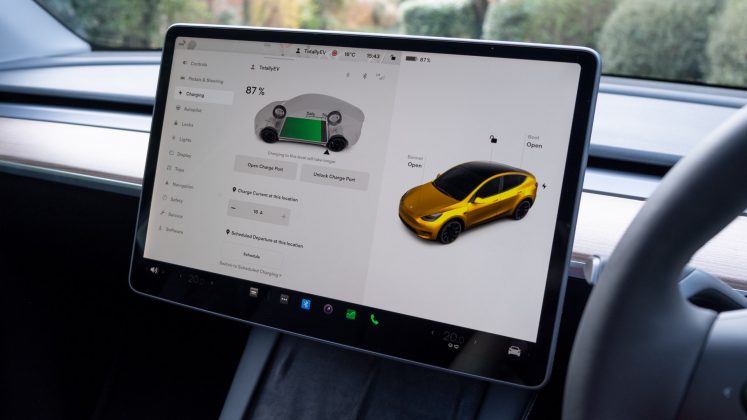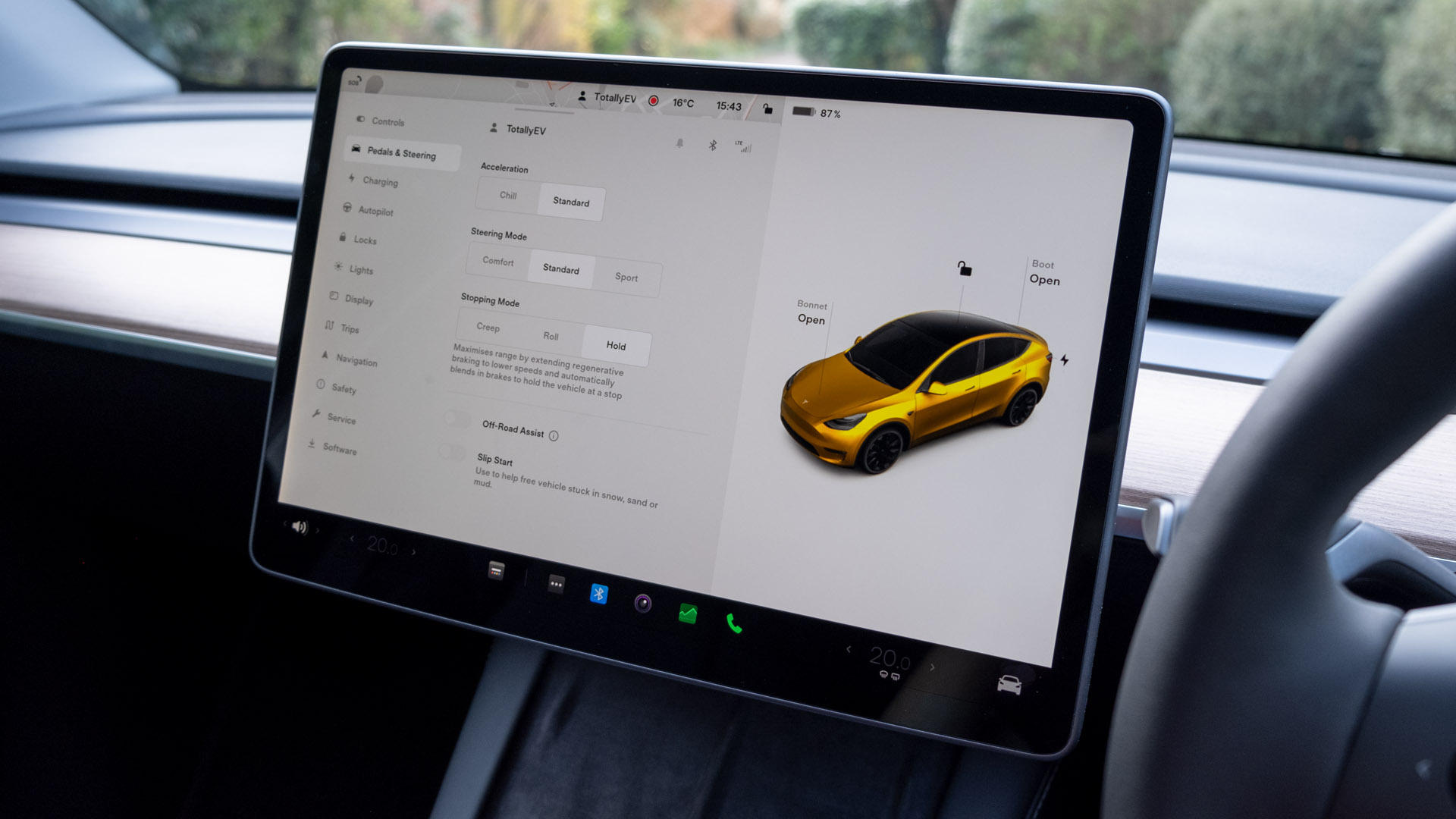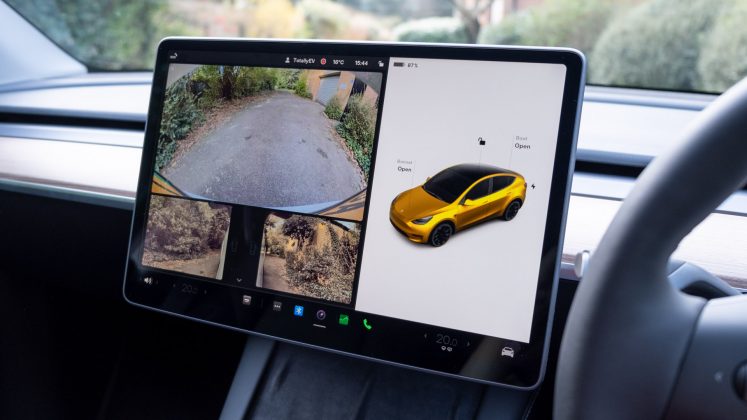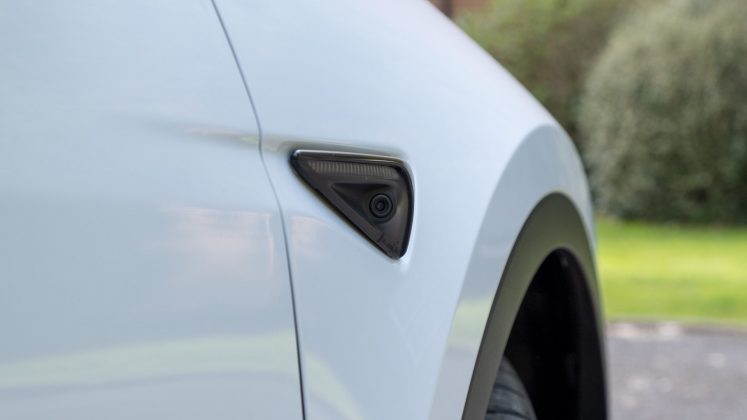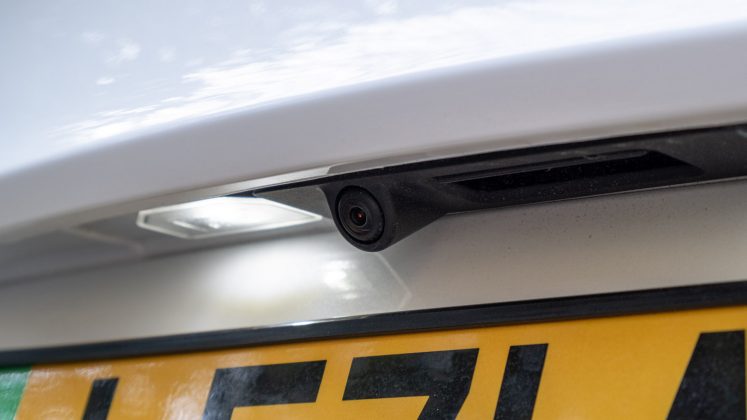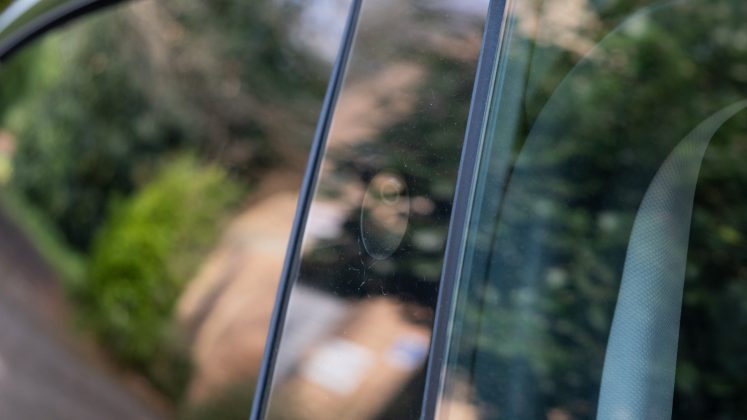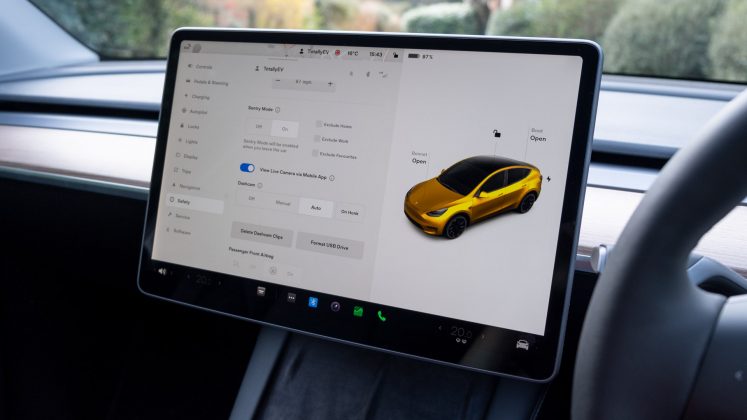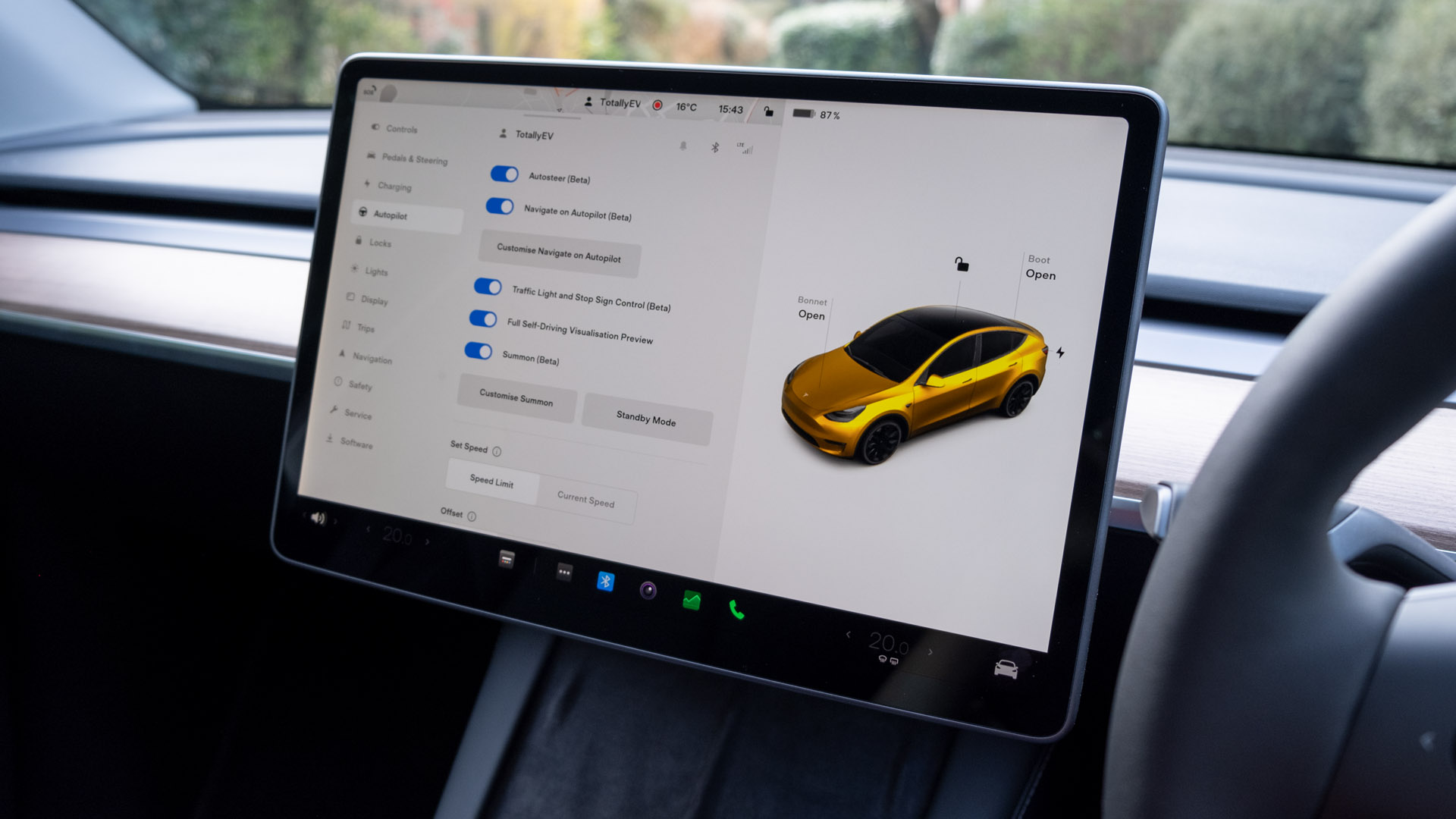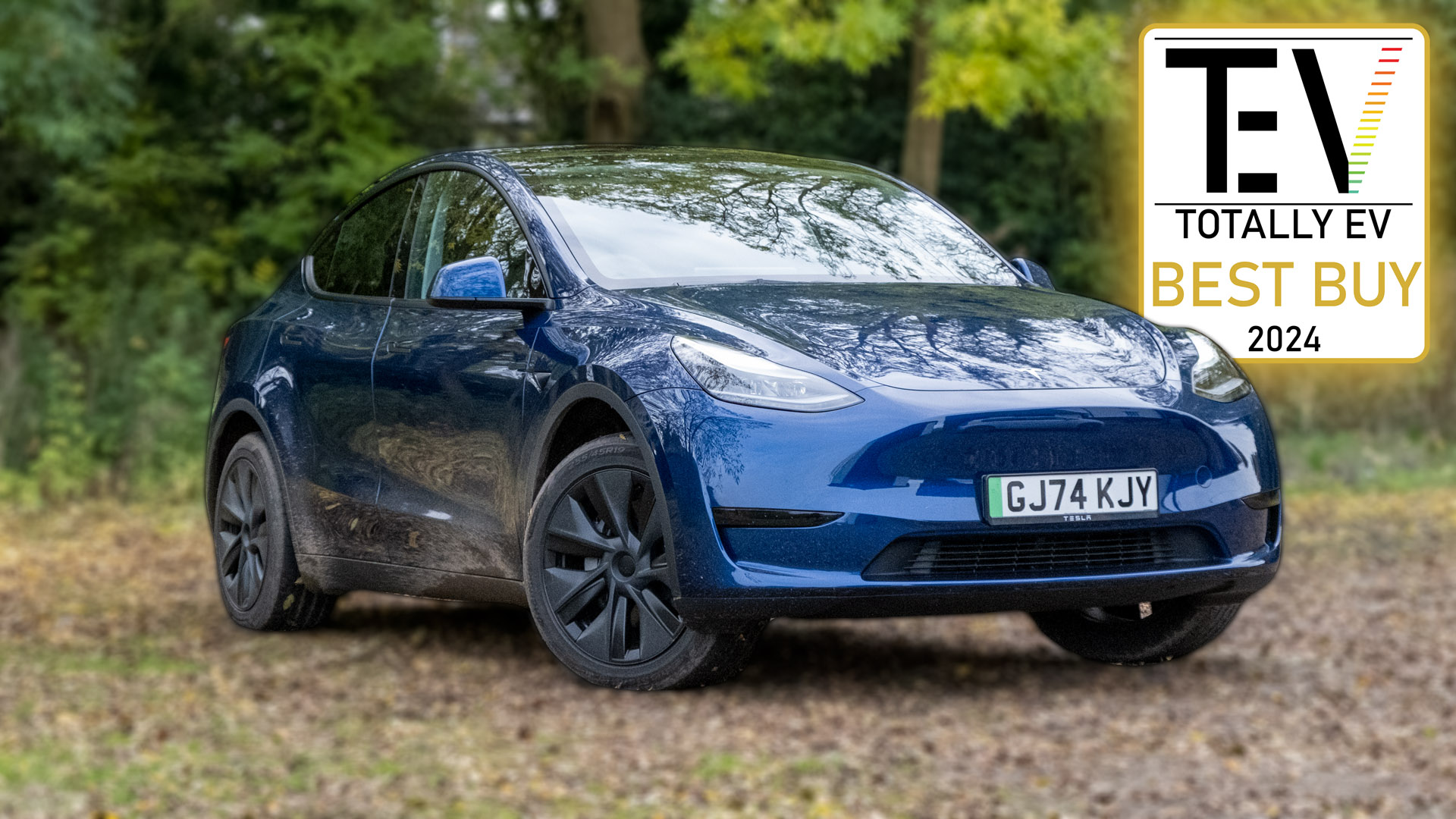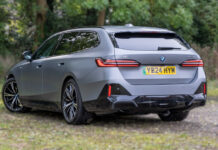The Tesla Model Y has been around since 2020 and is seen by many as a cross between the Model 3 saloon and Model X SUV. The American automaker is looking to appeal to those who want a more affordable all-electric SUV, while still providing the full-blown Tesla experience. However, with many fully electric SUVs on the market, can the Model Y stand out over its rivals?
If you’d prefer to watch a review of the Tesla Model Y, head on over to our YouTube channel.
Tesla Model Y price & competition
At the time of writing the Model Y is available in three trims: the Long Range Rear-Wheel Drive from £46,990, the Long Range All-Wheel Drive from £51,990, and the Performance All-Wheel Drive from £59,990.
Find the best Tesla Model Y deals
In terms of the alternatives, there are quite a few all-electric SUVs to consider: the Fiat 600e from £29,995; MG ZS EV from £30,495; Citroen e-C4 from £30,569; Citroen e-C4 X from £31,610; Kia Soul EV from £32,875; Hyundai Kona Electric from £34,995; Jeep Avenger from £35,700; Peugeot e-2008 from £36,500; Kia Niro EV ‘2 64’ from £37,325; BYD Atto 3 from £37,596; Vauxhall Mokka-e from £37,610; Skoda Enyaq iV from £40,585; Volkswagen ID.4 from £42,640; Hyundai Ioniq 5 from £43,445; BMW iX1 from £44,560; Kia EV6 from £45,275; Peugeot e-3008 from £45,850; Audi Q4 40 e-tron from £50,745; BMW iX2 from £51,615; Genesis GV60 Sport from £58,365; Polestar 4 from £59,990; BMW iX3 from £62,865; Jaguar I-Pace from £66,350; Audi Q8 e-tron from £67,800; Polestar 3 from £69,900; and the BMW iX from £70,985. You’ve also got the MG5 EV, an all-electric estate that starts from £30,995.
Read next: New Tesla Model 3 review: RWD vs Long Range vs Performance
Tesla Model Y exterior review
From the exterior, the Model Y is quite similar to its sibling the original Model 3 however, there are some key differences. The rear of the vehicle is noticeably larger while its front profile isn’t as flared; we feel that those who like the look of Tesla’s fleet will similarly appreciate the design of the Model Y.
It is, therefore, no surprise that the automaker has opted to use the same door handles as the saloon; they’re concealed within the car’s shell in order to maximise aerodynamic efficiency. They’re not as intuitive to use as those found on the Hyundai Ioniq 5, which prop out of the vehicle’s shell and can be seen at night. Nonetheless, once you’re accustomed to the mechanism it becomes second nature.
As for its side profile, the Model Y has slender plastic wheel arches, which don’t distract from its stylish design, although, we still would have preferred a body-coloured finish. The SUV also comes with 19” ‘Gemini Wheels’ as standard, while the pictured 20” ‘Induction Wheels’ cost an additional £2,100. We feel that the latter do bolster the exterior design of the vehicle, but do reduce the claimed range by 20 miles; so unless you dislike the look of the smaller rims, we’d suggest sticking to Tesla’s standard configuration.
When it comes to personalisation, there are five colours to choose from, where at the time of writing, ‘Pearl White Multi-Coat’ comes as standard. ‘Solid Black’ and ‘Deep Blue Metallic’ come at a £1,300 premium. The ‘Quicksilver’ and ‘Midnight Cherry Red’, cost a whopping £2,100.
Read next: BYD Atto 3 review: Not your ordinary EV
Tesla Model Y interior review
While there are some notable differences in the exterior design of the Model Y and older-generation Model 3, the two are almost indistinguishable within the cabin. Love it or hate it, the Model Y has a minimalist design. The horizontally-placed 15” display dominates the front of the cabin, with almost all your vehicle’s interactions being conducted via the infotainment system; including adjusting the windscreen wiper frequency to the speedometer.
Indeed, there’s no instrument cluster nor a Head-Up Display (HUD) offered as standard or as an option; of course, there are some third-party solutions available, but it’s not ideal for those who dislike tinkering around with their vehicles, and we suspect the omission of these features might put off a few prospective buyers.
Thankfully, however, the centre-weighted display is extremely responsive and provides for an intuitive user experience. It’s the best infotainment system available on the market; from built-in Google Maps with excellent route planning via Tesla’s Supercharger network, to the numerous games and apps that one can entertain themselves and occupants while parked. It is truly fantastic and is constantly evolving thanks to frequent firmware updates.
Speaking of which, since our review of the Model 3 in 2020, Tesla has introduced dedicated subwoofer controls through the audio tab; all Model Y variants in Europe and the UK feature the same fantastic premium 14-speaker configuration of the Long Range and Performance models of the saloon – in certain territories, such as the USA, the Model LR RWD has a downgraded 7-speaker system instead. If you’d like to hear how the system sounds, watch our detailed review on YouTube.
Continuing on the subject of technology, Tesla’s app is an intuitive way to interact with the Model Y. Through it, you can: remotely unlock or lock the vehicle; use it as a wireless key; control the interior’s cabin temperature; open the charging flap, boot, frunk and windows; check for the vehicle’s location; and use Summon, a feature that is comprised within the £3,400 ‘Enhanced Autopilot’ package.
In the UK and Europe, the latter feature is rather limited due to country laws, as you’ll have to be approximately 1-2m away from the vehicle for it to actually operate; in the US, the SUV can be summoned from afar. Nevertheless, it’s a useful feature if you’re parking in a tight space or if you’re physically disabled and want easier access to the vehicle.
Find the best Tesla Model Y deals
While the app is very intuitive and makes for a bettered experience, you can use Tesla’s NFC Key Card, instead. To unlock or lock the vehicle, you’ll need to tap on the driver’s side B-pillar, whereas to drive it, you’ll need to tap just below the two cupholders by the centre console. Should you not like either of these methods, you can also buy a stylish Key Fob in the shape of the car from the Tesla store. Note, that if you’re worried about security, biometrics can be added to the app, while a pin-to-drive can be set through the infotainment system.
Tesla’s use of technology is certainly impressive, however, it’s baffling that the automaker has still chosen to omit both Android Auto and Apple CarPlay from its infotainment system – neither of the systems are supported be it in a wired or wireless format. Granted, the built-in navigation system works a treat, but it would have been appreciated to have the option.
Read next: New MG ZS EV review: Still the best budget electric SUV?
Tesla Model Y storage review
Moving to storage, the cabin has plenty of areas to store your valuables. At the front, the centre console has a large compartment underneath the armrest; there’s a smaller bay that has a retractable cover, and there are fabric-lined wireless charging bays for two smartphones. Two cupholders also reside within the centre console, while a further two can be found at the rear within the pulldown armrest. As for the door bins, all four are plenty large, can easily accommodate a 500ml bottle and a few valuables, and are lined in fabric which prevents loose chase or keys from rattling around.
On that note, if you wish to hide your belongings from prying eyes you can lock them away within the electronically-operated glove compartment; one can also set a pin through the infotainment system to provide an additional layer of security. You’ll also find a USB Type-A port that can be used to save your dashcam footage or allow for high-quality audio playback via mass storage – FLAC files are supported in the Model Y. The two USB Type-C ports found within the small compartment by the centre console and the two at the rear are used for charging only.
Where the Model Y stands out is with its boot capacity. The quoted figure sits at 854 litres and with the seats propped down extends up to 2,100 litres – by comparison, its smaller sibling the Model 3 offers 594 and roughly 1,300 litres respectively. Drawing comparisons to other SUVs is quite tricky when solely examining the figures; most manufacturers quote the capacity to the parcel shelf when the seats are upright, while the Model Y figure omits the rear parcel shelf, making its boot capacity seem larger.
Nevertheless, here’s how it stacks up to its rivals: Kia EV9 (333/2,318-2,393 litres); Peugeot e-3008 (588/1,663 litres); Audi Q8 e-tron (569/1,637 litres); Skoda Enyaq iV (585/1,710 litres); Genesis Electrified GV70 (503/1,678 litres); Jaguar I-Pace (656/1,453 litres); VW ID.5 (549/1,561 litres); VW ID.4 (543/1,575 litres); Hyundai Ioniq 5 (520/1,587 litres); BMW iX3 (520/1,560 litres); Polestar 4 (526/1,536 litres); Jaguar I-Pace (656/1,453 litres); Audi Q4 e-tron (520/1,490 litres); Genesis GV60 (432/1,550 litres); BMW iX2 (525/1,400 litres); BMW iX1 (490/1,495 litres); Polestar 3 (484/1,411 litres); Peugeot e-2008 (434/1,467 litres); Nissan Ariya (408-466/~1,500 litres); Citroen e-C4 X (510/1,360 litres); Kia EV6 (490/1,300 litres); MG ZS EV (448/1,375 litres); Kia Niro EV (475/1,392 litres); Hyundai Kona Electric (466/1,300 litres); BYD Atto 3 (440/1,338 litres); Ford Mustang Mach-E (402/1,420 litres); Kia Soul EV (315/1,339 litres); Citroen e-C4 (380/1,250 litres); Peugeot e-308 (361/1,271 litres); Mercedes EQA (340/1,320 litres); Fiat 600e (360/1,231 litres); Smart #1 (421/989 litres); Jeep Avenger (355/1,053 litres); Vauxhall Mokka-e (310/1,060 litres); GWM Ora 03 (228/858 litres). As for the MG5 EV estate, it offers 479 and 1,367 litres, respectively.
In practical terms, we’d say the Model Y sits between the Hyundai Ioniq 5 and the Skoda Enyaq iV, thus still offering plenty of capacity for your weekly shops or family trips. On that note, the Model Y has an enormous underfloor area, which is handy for storing away your charging cables or other luggage. Better still, the rear split-folding seats have a 40:20:40 design and when dropped present a flat loading bay; the ability to drop the rear seats electronically via buttons found within the boot, means it is both practical and convenient to transport larger goods.
In comparison to the Model 3, the Model Y also has a hatchback design, whereby the electronically-operated tailgate opens up to such an extent that 6-foot (182cm) individuals won’t have an issue when accessing the rear of the vehicle. The same praise couldn’t be said about the Model 3.
Much like its sibling, however, the front storage compartment (also referred to as frunk) is less practical, as its locking mechanism can only be electronically unlocked via the app or through the infotainment system, but yet still requires you to open and close it manually. It’s a shame that it’s not fully electronically operated like the tailgate, as the Model Y’s frunk offers a whopping 117 litres of capacity.
Read next: Skoda Enyaq iV review: The Volkswagen ID.4 alternative
Tesla Model Y comfort review
While accessing the front storage area might seem cumbersome, the ability to operate it from within the cabin is certainly appreciated. Likewise, when leaving the vehicle, all four doors have an electronic door release button, which truly makes it a breeze each time you or your occupants wish to exit the cabin.
This brings us to comfort, where the sense of spaciousness can certainly be felt throughout the cabin. Both at the front and rear, 6-foot 4-inches (198cm) individuals can be seated with ease; the rear middle seat has tighter headroom but given the Model Y has a flat rear footwell design, it means all those sitting at the back can fully stretch out their legs. Better still, all seats – that also includes the rear middle one – are heated; the steering wheel is too.
Note, at the time of writing and in the UK, the Model Y is only available as a five-seater. In the US and select markets, it’s also possible to get it as a seven-seater; making it standout over rival alternatives.
Another standard feature that we love is the inclusion of a panoramic glass roof, which stretches almost the entirety of the cabin. This brings in additional light and thanks to UV coating means you won’t get a suntan while sitting inside the cabin, either. Should you wish to go a step further, a sunshade can be purchased as an additional option.
Similarly, it’s good to see fully electronically-operated front seats fitted as standard. However, due to the raised front seat design, it can be problematic for taller-sized individuals to find the best driver’s position; oddly, the seats can’t be lowered to the same degree as the ones found in the Model 3 or the BMW iX3, among others.
Elsewhere, the Model Y’s cabin isn’t as insulated as the aforementioned vehicles. Tyre noise is audible and wind noise can be heard deflecting off the A-pillars while traversing at faster speeds.
Read next: Hyundai Ioniq 5 review: Better than Tesla Model 3?
Tesla Model Y performance review
This brings us to straight-line speed, as the Model Y stands out, especially for the price. Performance figures are oddly not shared by the manufacturer. Nonetheless, all of the variants are blisteringly quick and we’d guestimate that there’s some serious amount of power and torque available – even in the entry-level Long Range Rear-Wheel Drive (LR RWD).
Using Racelogic’s Performance Box Touch, we had the LR RWD tested from 0-20mph in 1.83 seconds; 0-30mph in 2.82 seconds; 0-60mph in 5.89 seconds; 50-70mph in 2.45 seconds and a peak acceleration of 0.5g. We also had the Long Range All-Wheel Drive tested using Racelogic’s Vbox Sport from 0-60mph in 4.68 seconds. Expect the Performance model to be even faster with a claimed 0-60mph in just 3.5 seconds, making it one of the fastest SUVs on the market.
Aside from sheer speed, both the rear-wheel drive (RWD) and all-wheel drive (AWD) Model Ys instil plenty of confidence when driving in trickier conditions and feel planted to the ground. The AWD model is the better out of the two, due to that extra motor providing even better grip on the road.
This isn’t to be confused with the vehicle’s driver’s feel, however. The Model Y doesn’t have the same level of one-to-one connection to the road as the BMW iX1, BMW iX3, Jaguar I-Pace or Audi Q8 e-tron. We’d say it’s on par with the likes of the Audi Q4 e-tron, Mercedes EQA, and VW ID.5; and superior to the Kia Niro EV, Peugeot e-2008, Citroen e-C4, and the Hyundai Kona Electric.
Much like the driver’s feel, the Model Y doesn’t have a class-leading suspension system. One can feel speed bumps, potholes and road anomalies, which makes for less pleasurable inner-city commutes over rival SUVs or its smaller sibling the Model 3, which has a softer configuration. On the other hand, the Model Y’s stiffened setup does yield less body roll on windy country roads – a rarity in electric SUVs due to the extra weight they carry over electric saloons or non-electrified vehicles.
Buy a car phone mount on Amazon (Affiliate)
The Model Y’s driving characteristics are important, but we suspect many will care more about its electric range. In this department, the Tesla reigns supreme. In the Long Range All-Wheel Drive with the 20” Induction Wheels fitted, we needed 260-280 miles – we suspect that had the 19” Gemini Wheels been installed we’d have seen north of 280 miles. Should you want one of the most efficient electric SUVs on the market, you’ll want to opt for the Long Range Rear-Wheel Drive instead, as we managed to attain a class-leading 315-335 miles (with the fitted 19” Gemini Wheels) in our mixed driving tests.
Just for comparison sake, we attained 310-330 miles in the Tesla Model 3 Long Range AWD, 255-275 miles in the Tesla Model 3 Long Range Performance and 225-245 miles in the Tesla Model 3 RWD.
As for the other electric SUVs on the market, we achieved: 325 miles in the VW ID.5; 300 miles in the Skoda Enyaq iV 80 and Kia EV9 RWD; 275-295 miles in the Peugeot e-3008; 270-290 miles in the Polestar 4; 260-280 miles in the Polestar 3; 250-270 miles in the Audi Q8 e-tron 55 and Smart #1; 260 miles in the Kia Soul EV, Audi Q4 e-tron and VW ID.4 (no heat pump); 240-260 miles in the Kia EV9 AWD, Kia EV6 RWD and Nissan Ariya 87 kWh; 240-250 miles in the Jaguar I-Pace; 230-250 miles in the Hyundai Ioniq 5 AWD and MG ZS EV Long Range; 225-245 miles in the BMW iX1 xDrive30; 235 miles in the BMW iX3; 210-230 miles in the Genesis GV60 Sport+, MG5 EV and BYD Atto 3; 205-225 in the BMW iX2 xDrive30, Hyundai Kona Electric and Kia Niro EV; 210-220 miles in the Mercedes EQA 250; 200-220 miles in the Genesis Electrified GV70, Fiat 600e and Jeep Avenger; 200-210 miles in the BMW iX xDrive40 M Sport; 190-210 miles in the Audi e-tron S; 180-200 miles in the Citroen e-C4 / e-C4 X and Ford Mustang Mach-E; 170-190 miles in the Peugeot e-308; 150-170 miles in the Vauxhall Mokka-e; and 140-160 miles in the Peugeot e-2008 and GWM Ora 03.
Another excellent trait of the Model Y is that it benefits from Tesla’s Supercharger network, which is easily the best and simplest charging infrastructure across the UK, Europe and the US. Route planning is a breeze thanks to the fantastic infotainment system, which shows you charging points along the way and gives you an accurate indication of the remaining charge that you’ll have once you arrive at your destination or do the round-trip. Better still, if you are to take a longer trip, the system will be smart enough to calculate where and for how long you’ll need to charge. It’s simple, intuitive and takes away the faff of having to find the best route.
Read next: A list of our favourite phone holders
In terms of charging, the Model Y supports up to 250 kW of input via its CCS charging port. Nevertheless, it’ll go from 10-80% in just 25 minutes when connected to an ultra-rapid DC charger, such as Tsla’s Supercharger V3. Plug the Model Y into a V2 Supercharger (capped at 150 kW) and it’ll take roughly 40 minutes, instead. Should you opt for a non-Tesla branded charger, such as a more commonly found 50 kW motorway charger, it’ll take around 1-2 hours.
As for AC charging, the Model Y has an 11 kW onboard charger, which means when it’s connected to three-phase power, it’ll take 8-9 hours to recharge from empty to full via its Type 2 port. A 7 kW input will take 11 hours, while a three-pin wall socket will take roughly 40 hours.
Find the best Tesla Model Y deals
Of course, you can also recoup energy when on the move via regenerative braking. The Model Y, much like its smaller sibling, allows for one-pedal driving. When lifting off the accelerator pedal one can bring the SUV to a complete standstill. It’s a shame, however, that there’s no degree of customisation via the use of paddle shifters or via the infotainment system.
Some of its competitors, such as the Hyundai Ioniq 5 and Kia EV6 offer a plethora of options from light to adaptive regenerative braking levels. One can only hope that the American automaker will reintroduce the ability to customise the harshness through the display via a firmware update; as it was present in the older-generation Model 3, but was inexplicitly removed in 2020.
Read next: Audi Q4 e-tron review: Best electric Audi?
Tesla Model Y safety review
When it comes to safety, the Tesla Model Y was tested for crash safety by Euro NCAP in 2022 and scored the full 5/5 stars, scoring a whopping 97% in Ault Occupancy, 87% in Child Occupancy and a near-perfect 98% in the Safety Assist tests. It also received top marks from the US-led National Highway Traffic Safety Administration (NHTSA).
As for your driver assistance systems, there are numerous standard features included such as the fantastic Adaptive Cruise Control system with Stop & Go technology, which keeps you at a safe distance from the leading vehicle, and will even bring you to a complete standstill in heavy traffic without you needing to touch on the brake pedal. Lane departure avoidance, forward and side collision warning, and Automatic Emergency Brake (AEB) further bolster the Model Y’s safety credentials.
We’re also particularly fond of the blind spot monitoring system. Not only does it alert you of a vehicle being present in your blind spot through the use of the infotainment system, but you can also see your respective surroundings when indicating. Indeed, the vehicle uses the side-view cameras to show a live feed of your blind spot via the 15” display.
It’s certainly an intuitive means of bettering driving security, but we’d wish that Tesla had placed the live feed in another location; it’s at the bottom corner of the infotainment system, closest to the driver, which means that when your hands are placed at three and nine o’clock on the steering wheel, part of the camera feed will be hidden. You can see it in action on our YouTube channel, Instagram feed or TikTok page.
Now, should you wish to take it one step further, you can add the £3,400 ‘Advanced Autopilot’ package that brings self-driving navigation, auto lane change, Autopark and Summon. Opt for the full shebang at an additional £6,800 and you’ll have access to Tesla’s full self-driving (FSD) package; at the time of writing, the expensive option doesn’t add many additional features but is continually being improved via firmware updates. We’d only recommend FSD for those who want to be part of the first in the world to experiment with the manufacturer’s latest autonomous developments.
As for visibility, it’s a mixed bag. Over the bonnet and the side windows, it’s excellent. However, the chunky A-pillars mean you’ll have to double-check your surroundings when you’re cornering and likewise, should you want to look over your shoulder when parking, the rearview is limited; even when the rear middle headrest is concealed within the seats. Thankfully, Tesla includes high-resolution surround cameras as standard – these provide you with a near 360-degree view of the vehicle, ensuring you won’t kerb your wheels or accidentally reverse into an object.
Read next: Volkswagen ID.5 review: Germany’s best electric SUV?
TotallyEV’s verdict on the Tesla Model Y
While the Tesla Model Y isn’t quite perfect, namely with its stiffened suspension setup and lack of a HUD, it’s still among the best all-electric SUVs on the market. It combines efficiency, access to a class-leading charging network, blistering straight-line speed and a spacious design into one comprehensive package. As a result, it receives TotallyEV’s Best Buy award.
Find the best Tesla Model Y deals
Would you pick the Model Y over its rivals? Let us know in the comments section below or via social media; we’re on: YouTube, Instagram, Facebook, X and LinkedIn.

